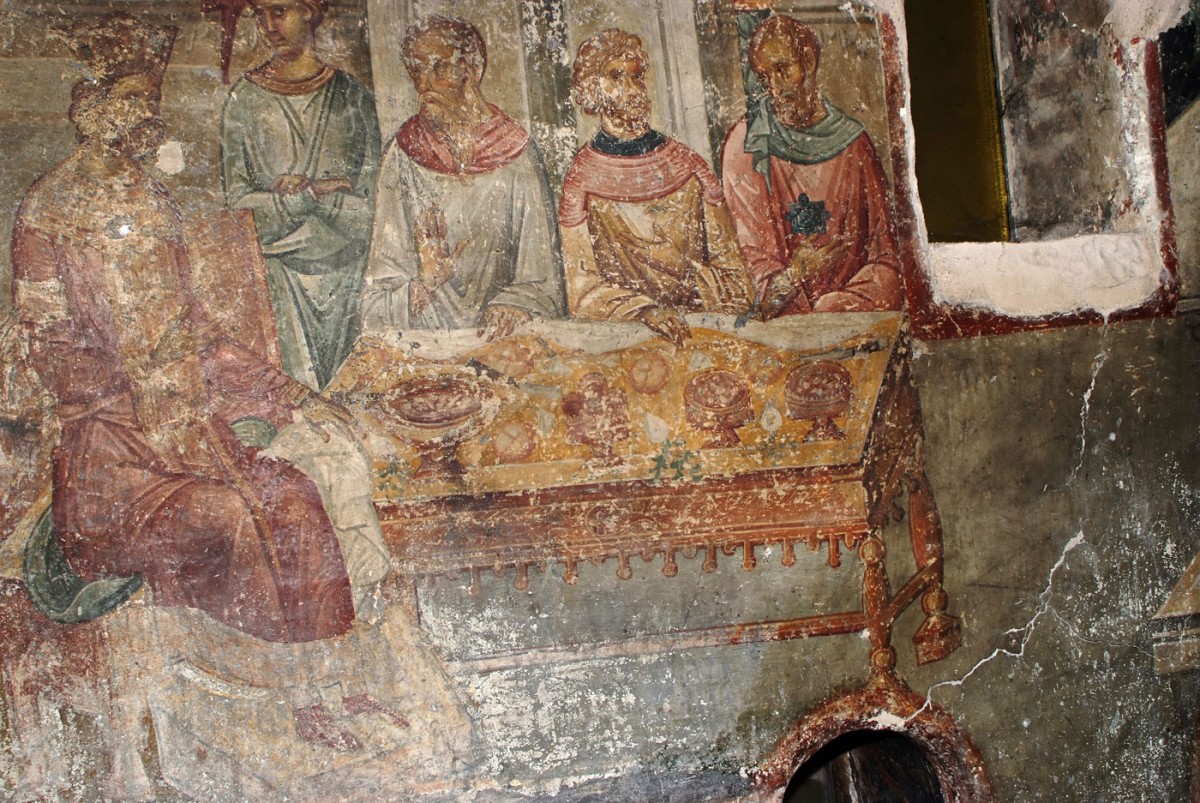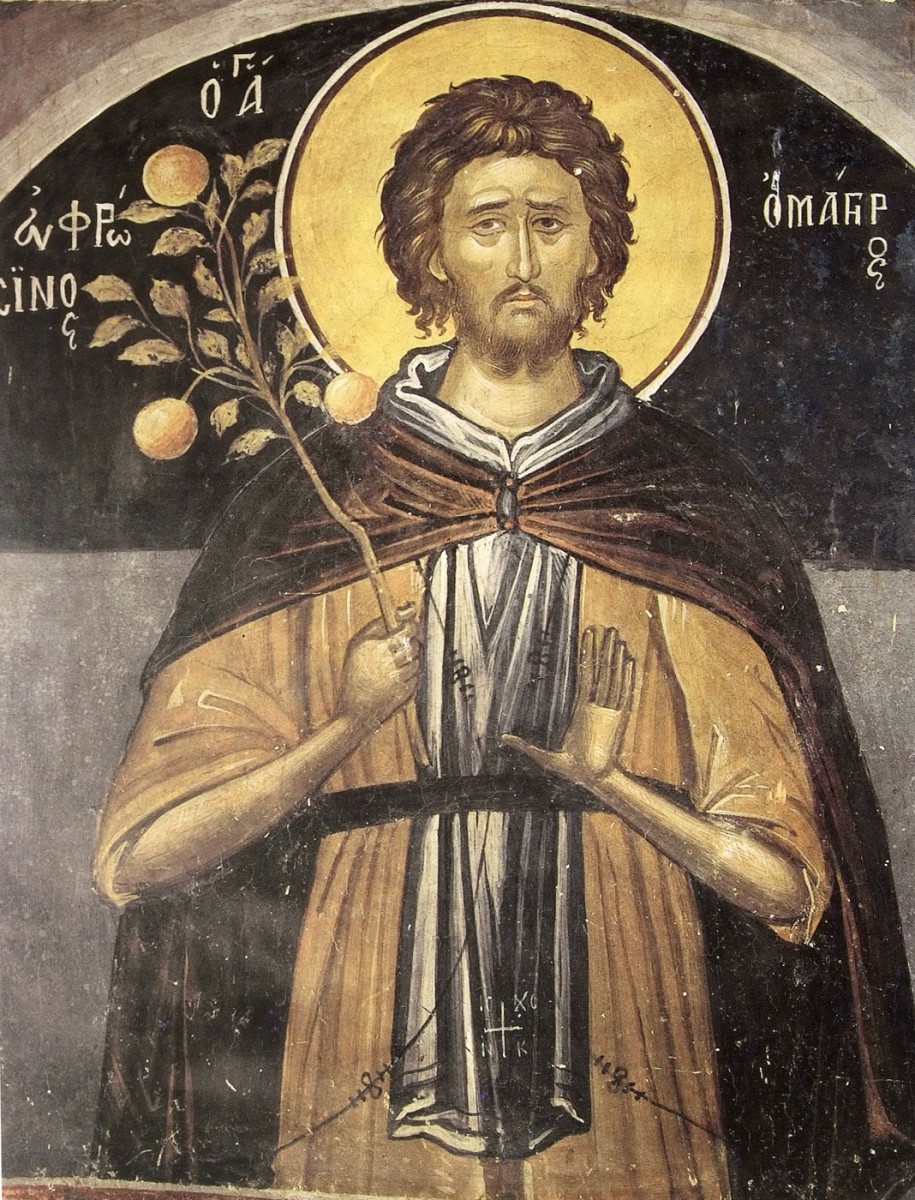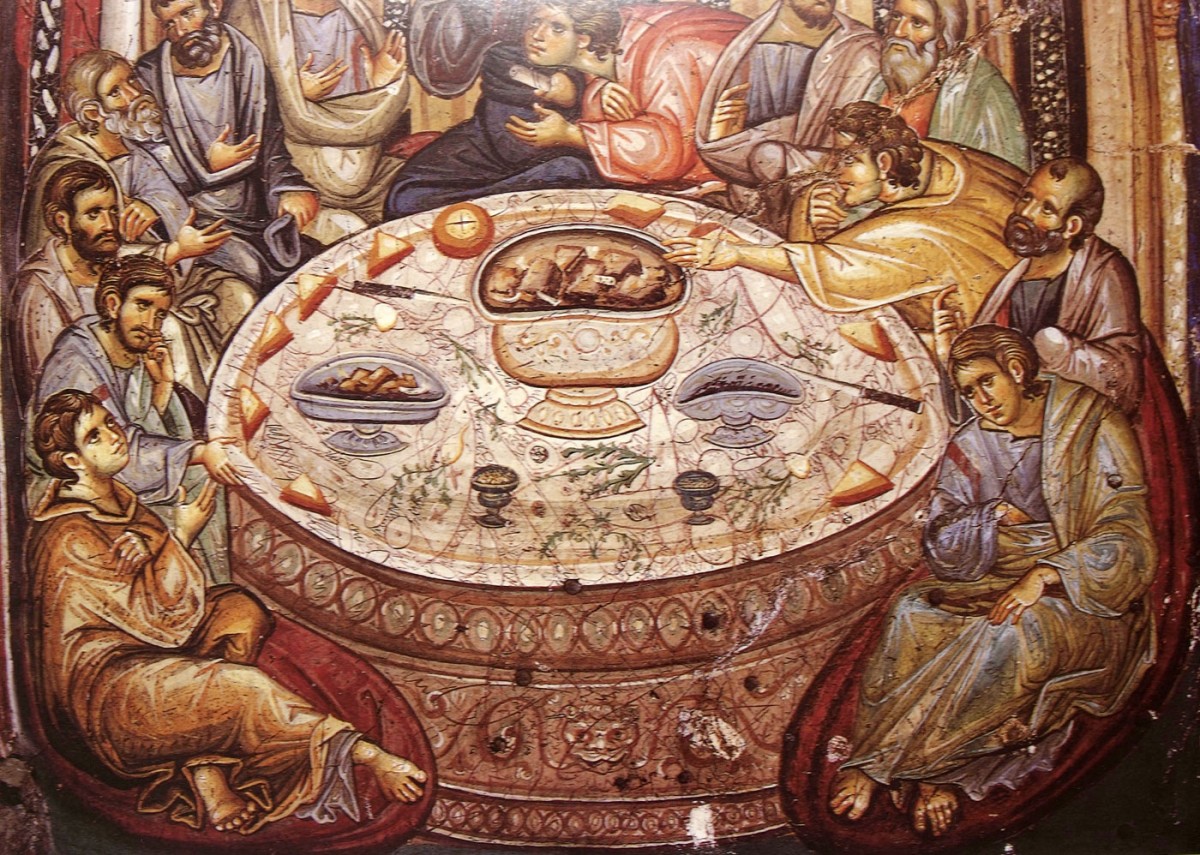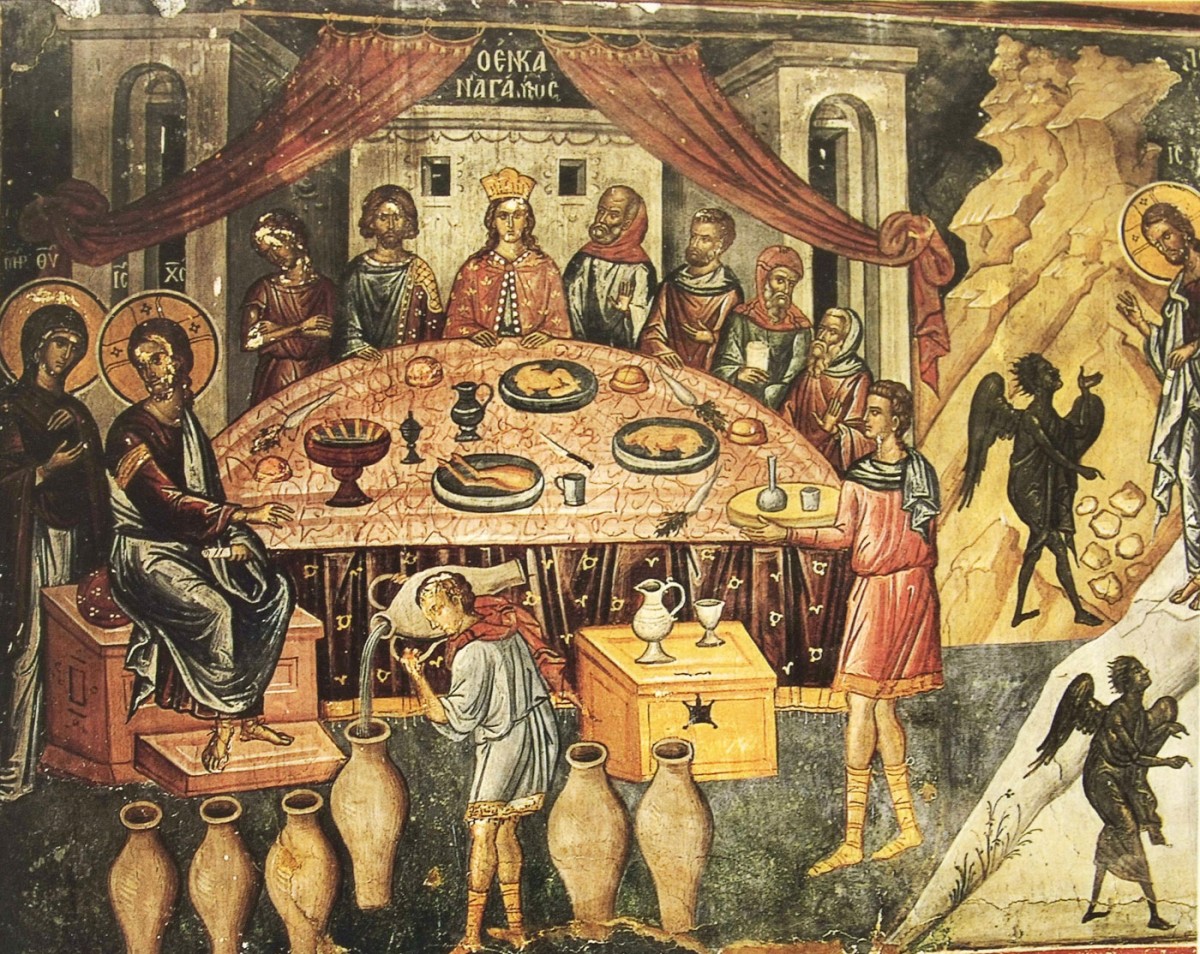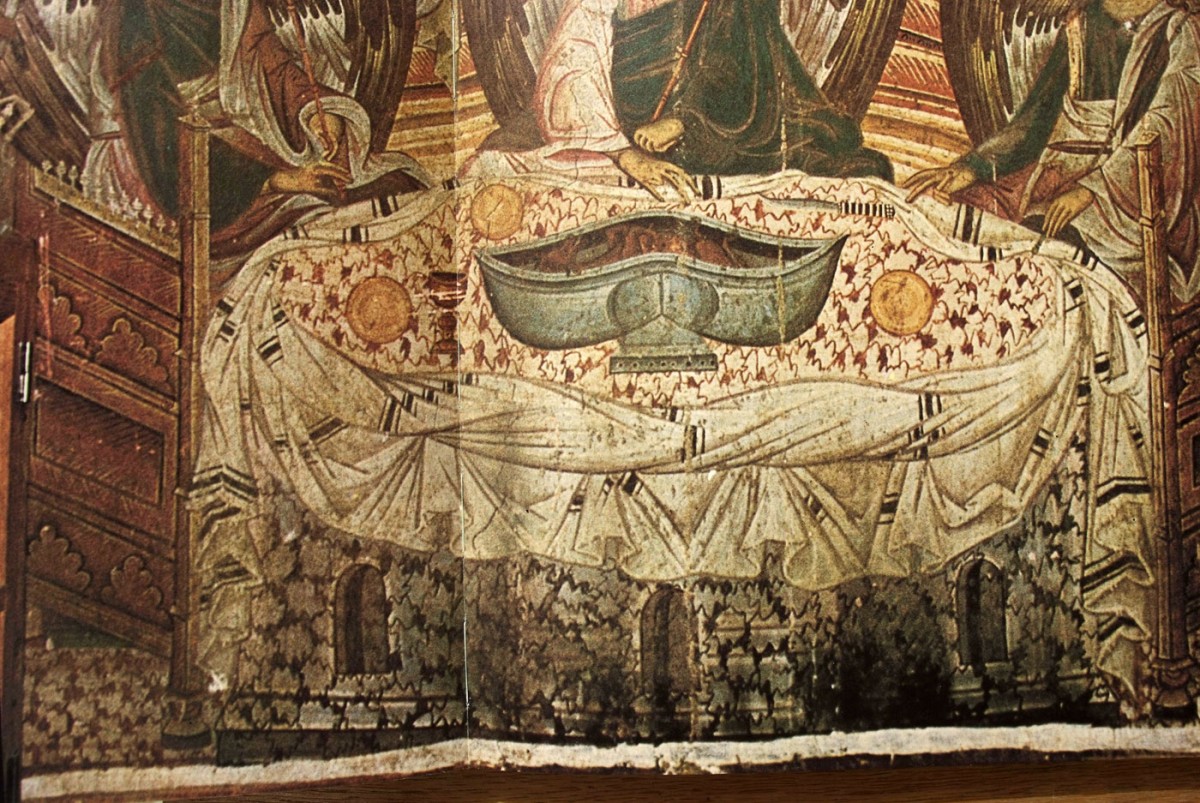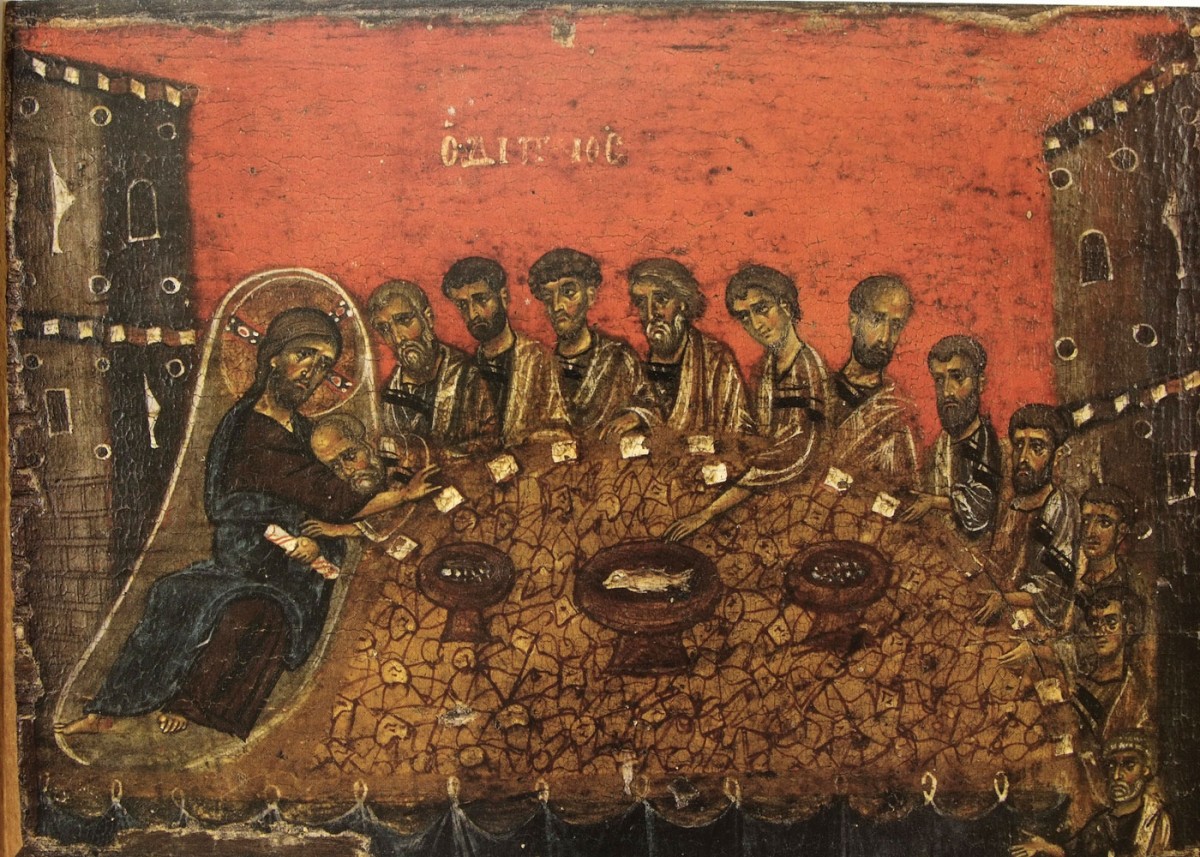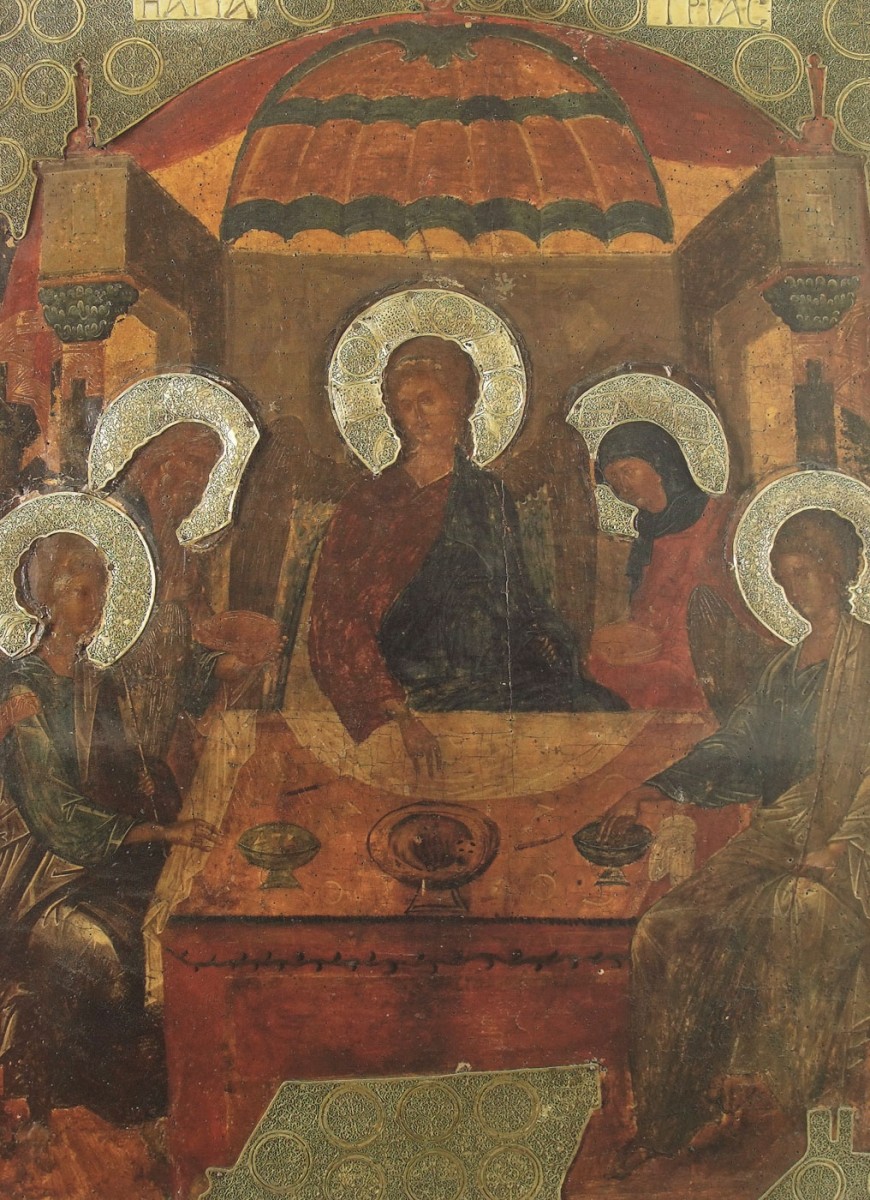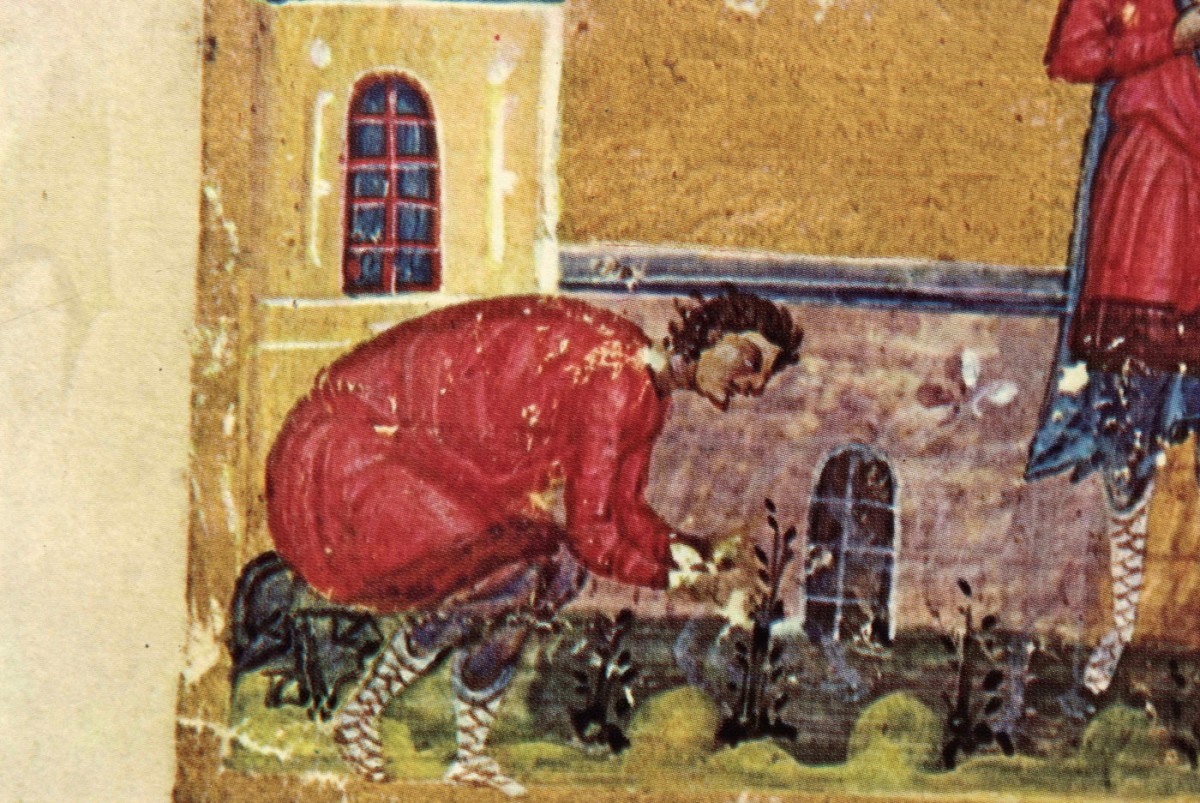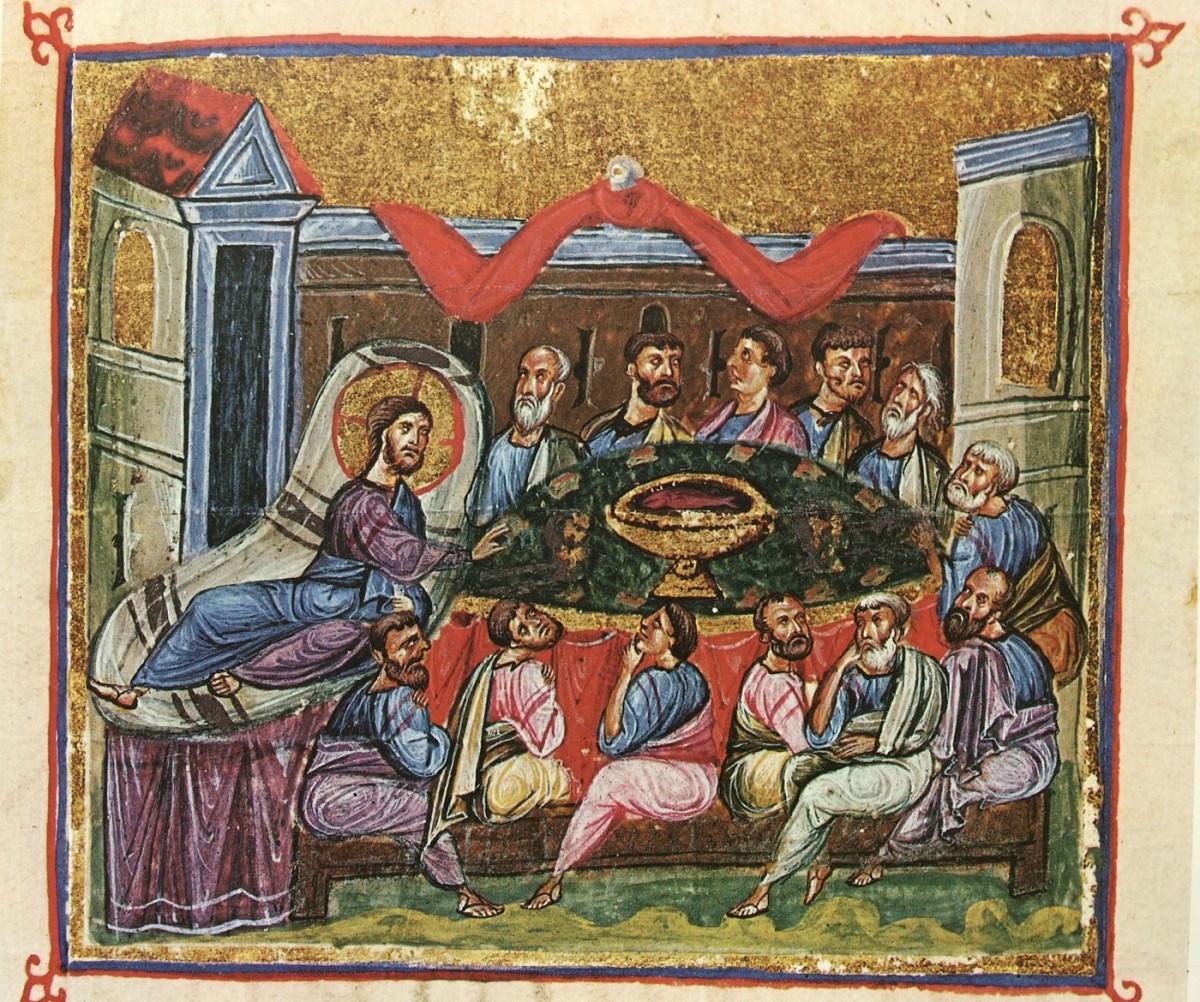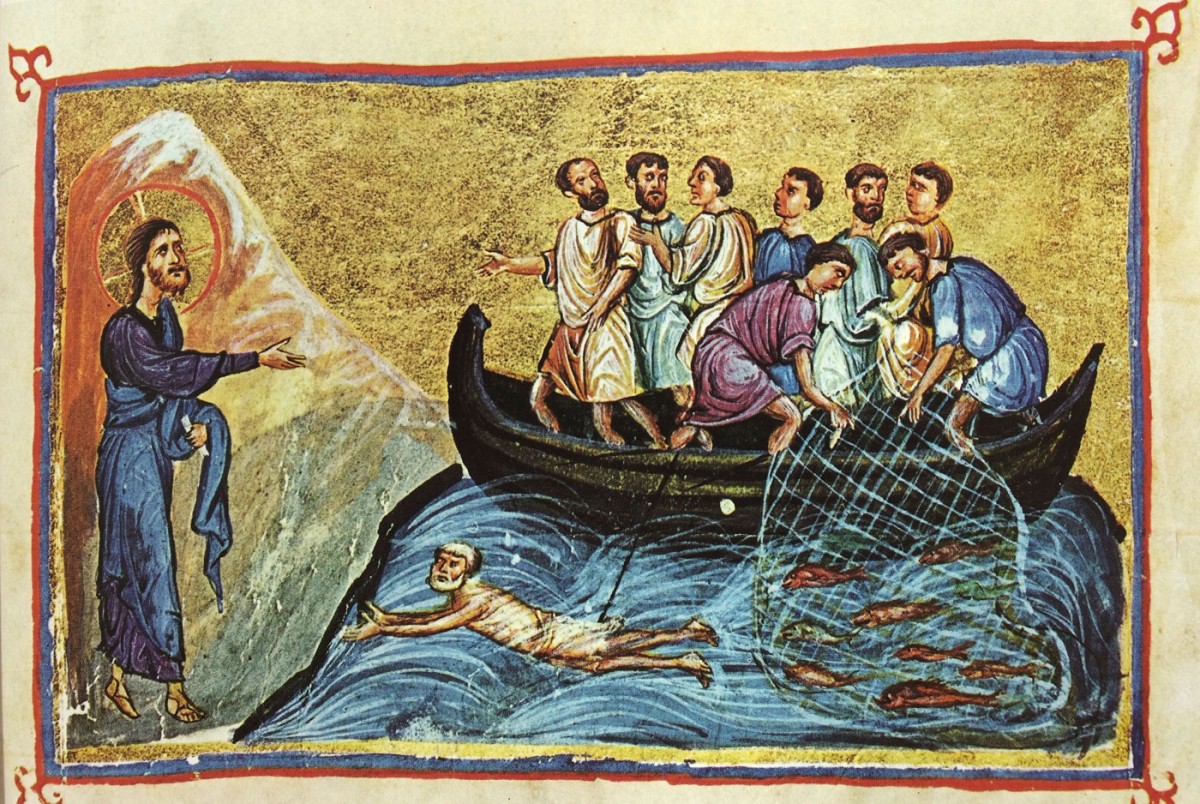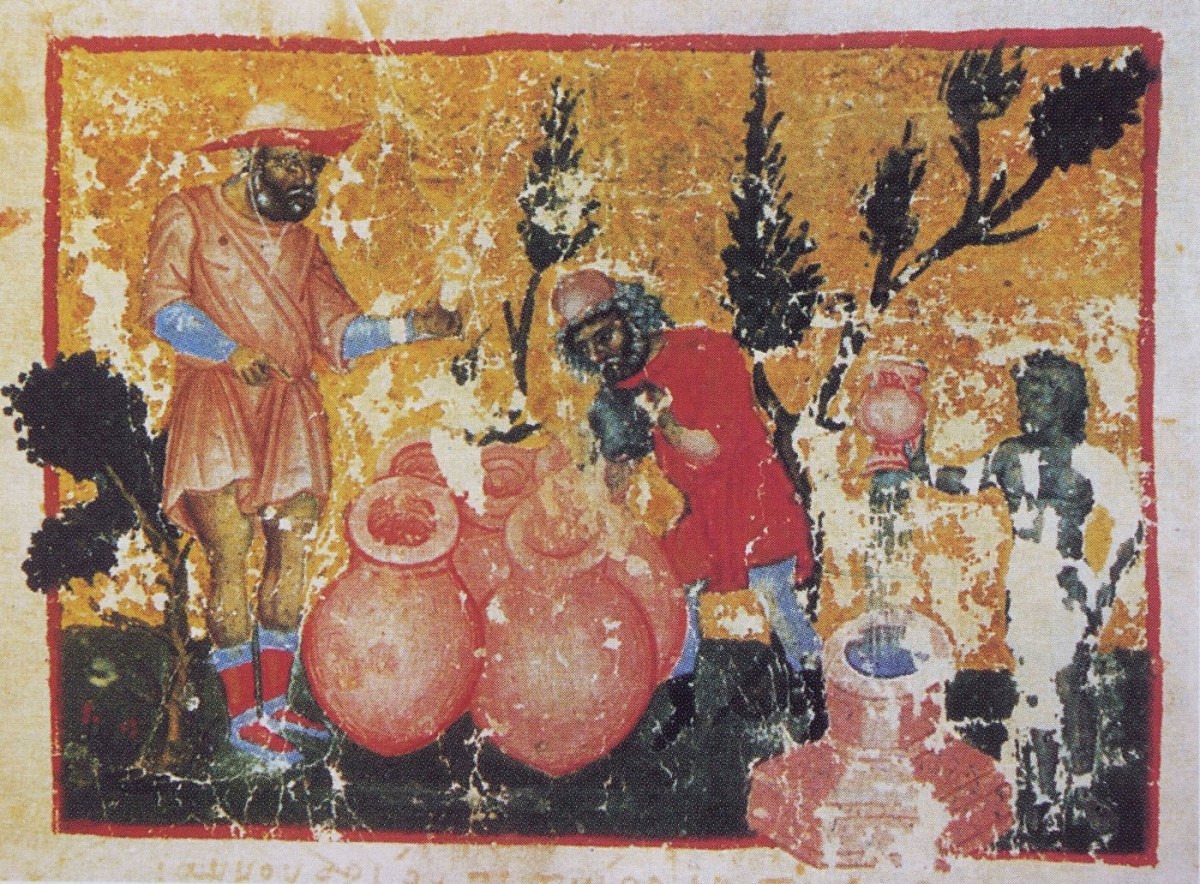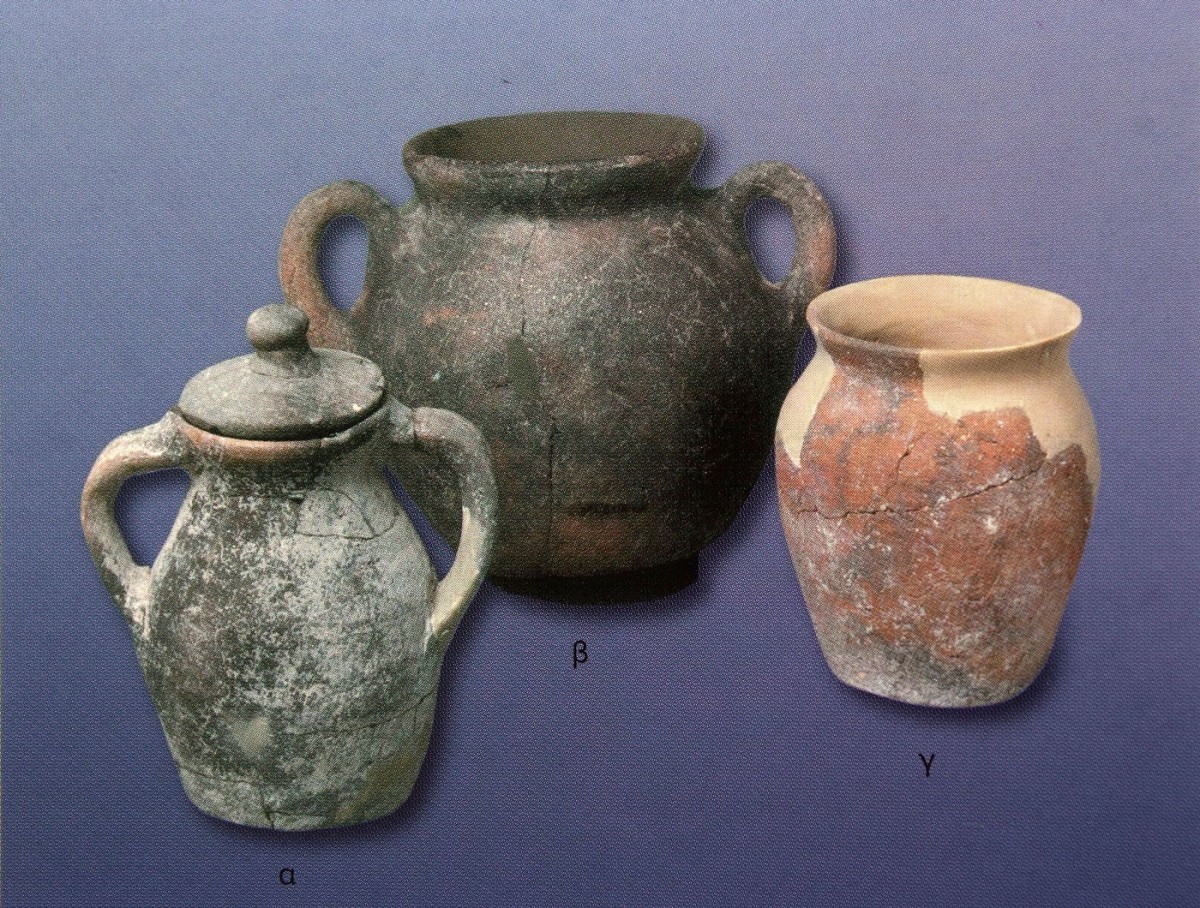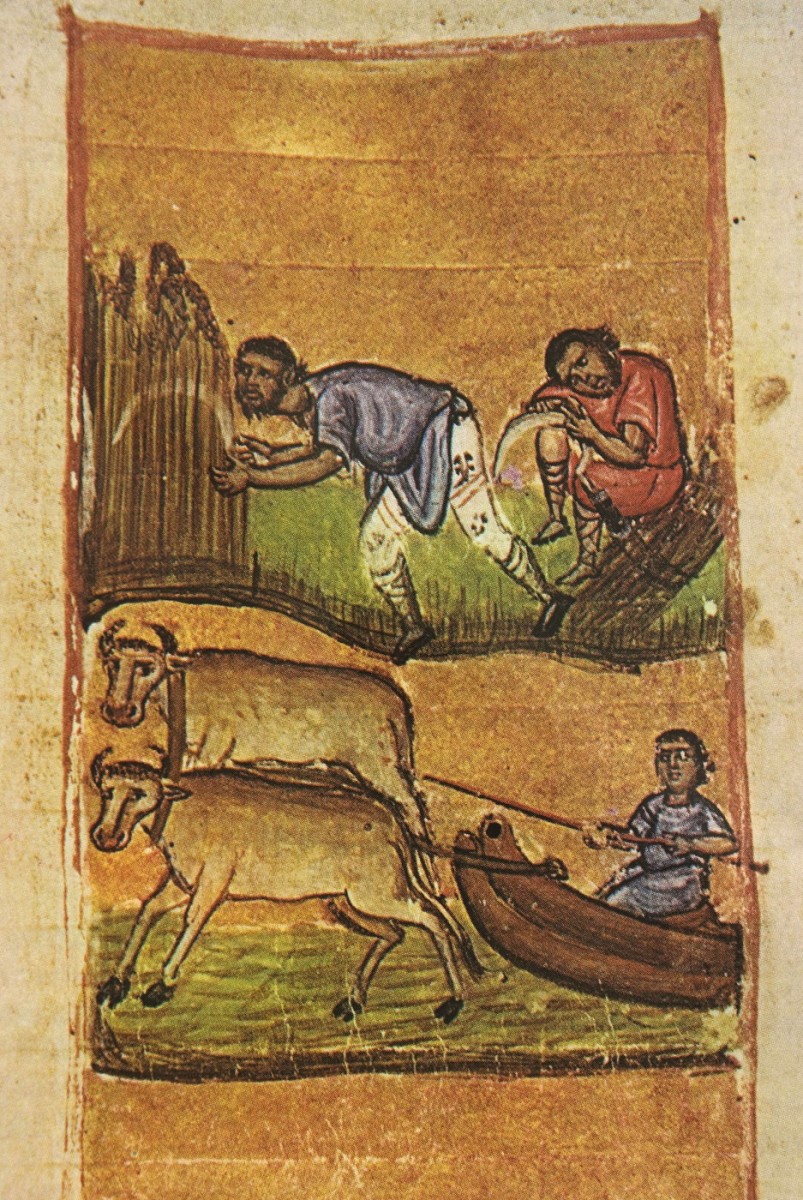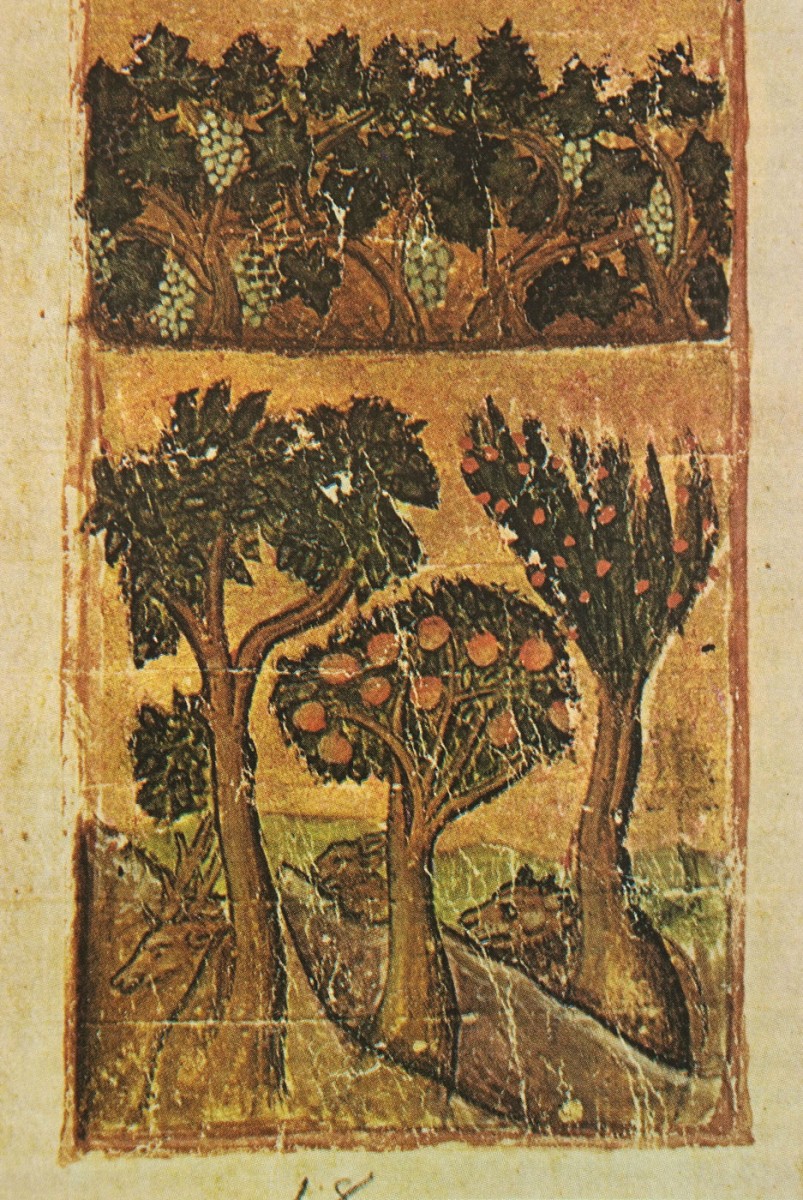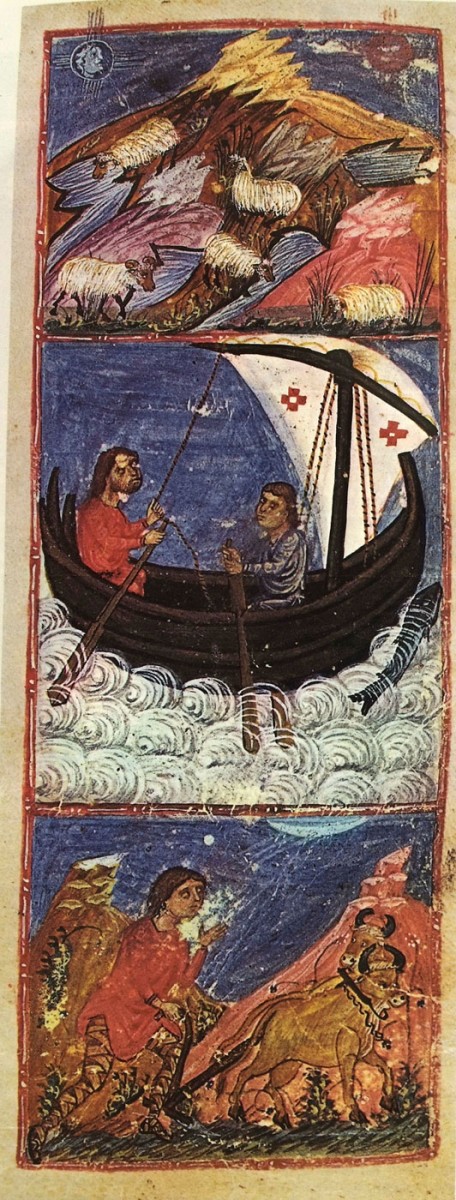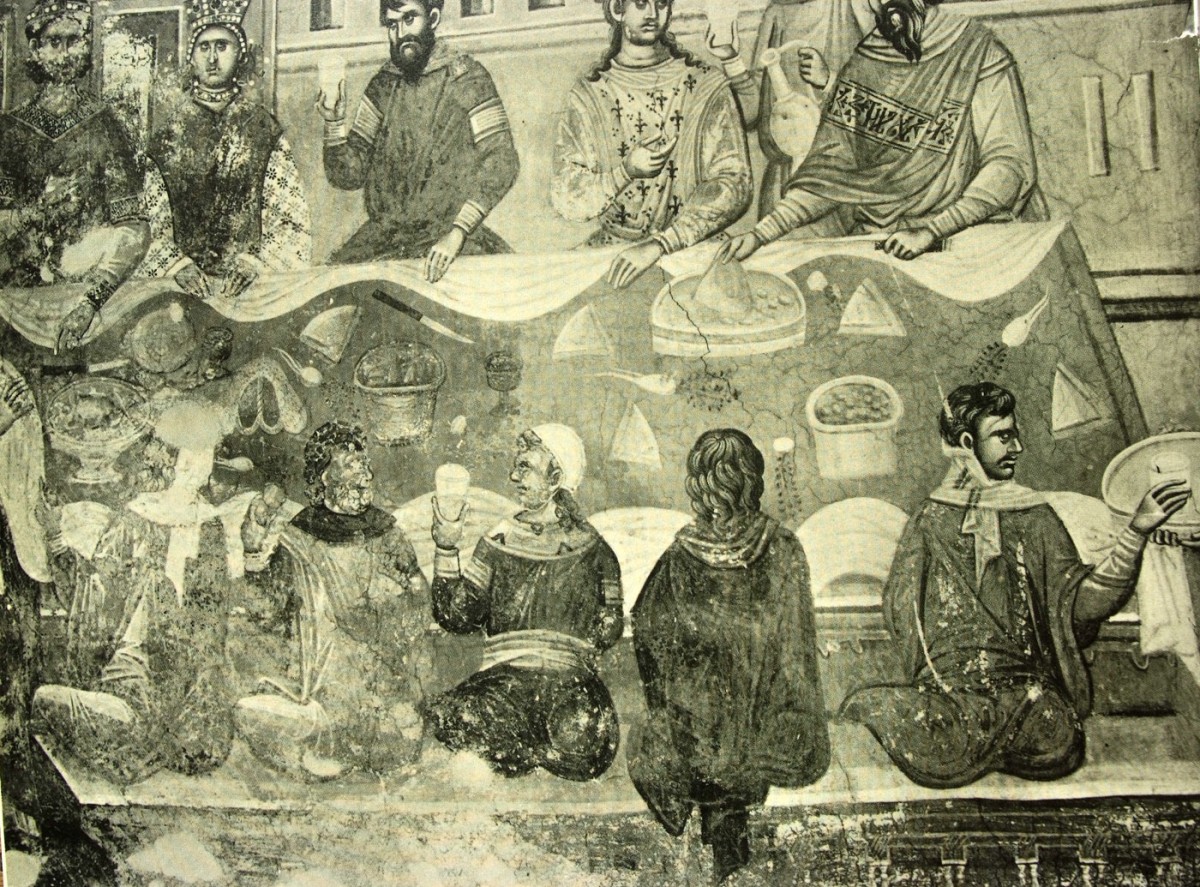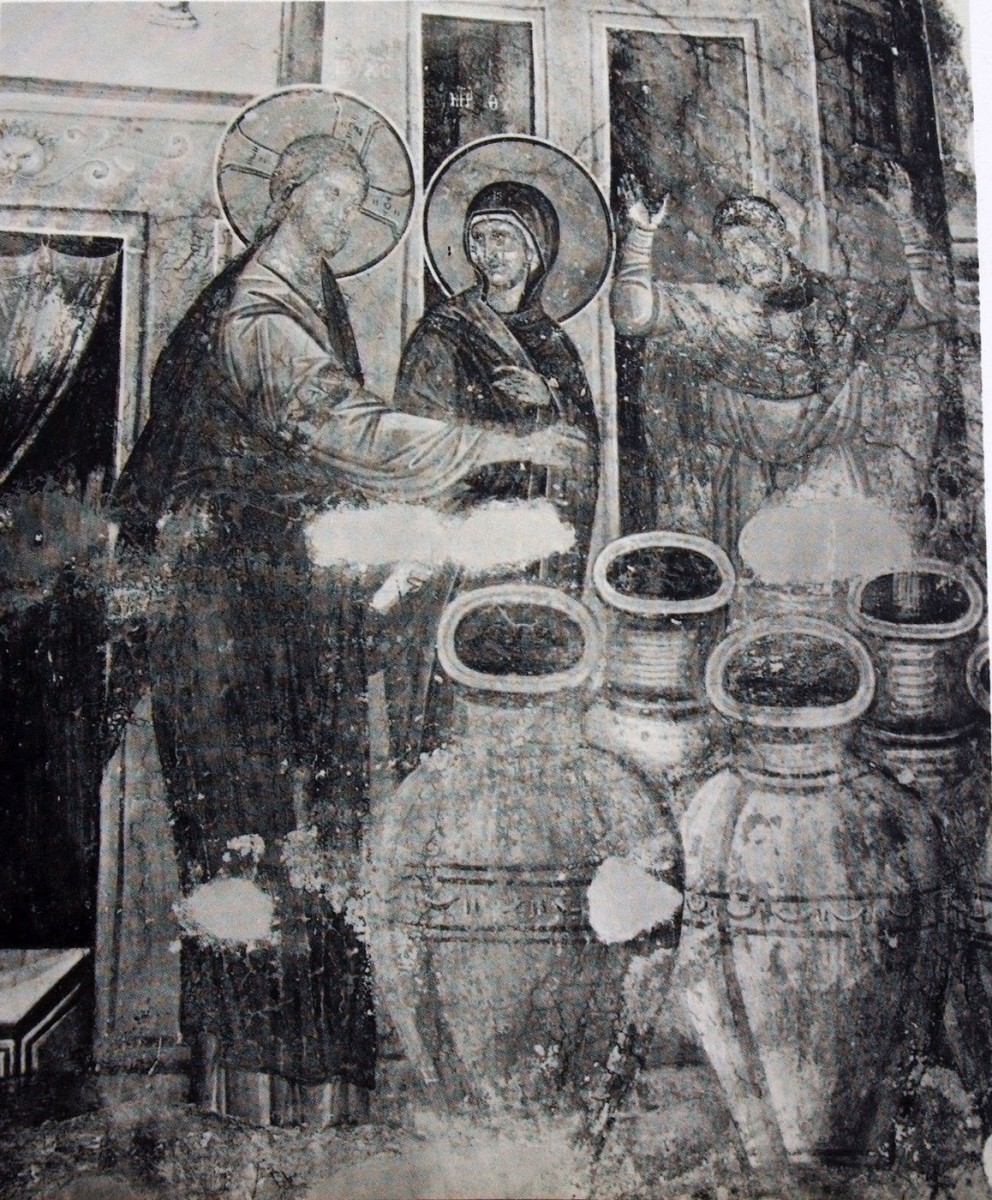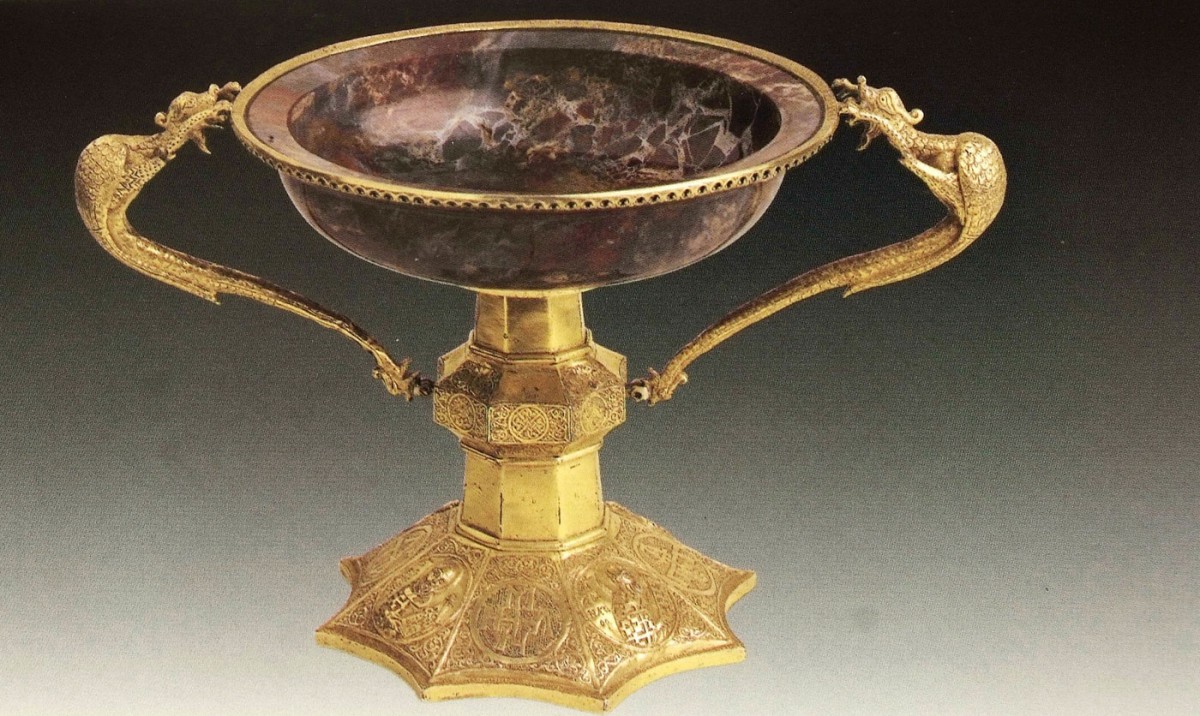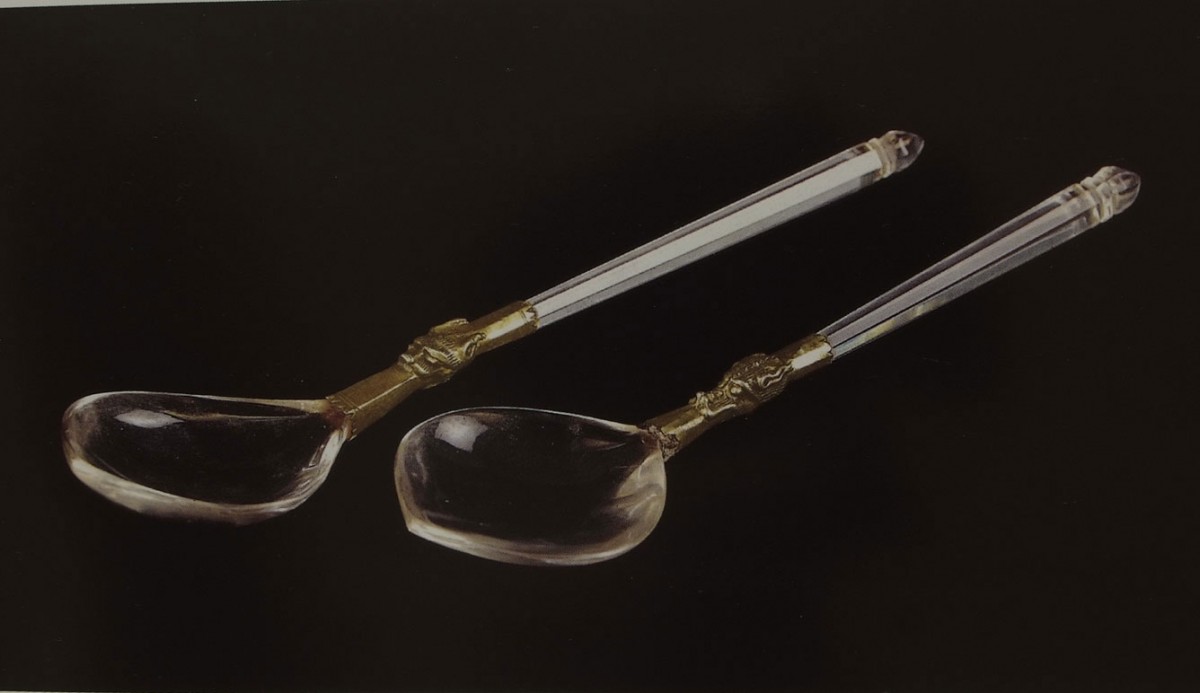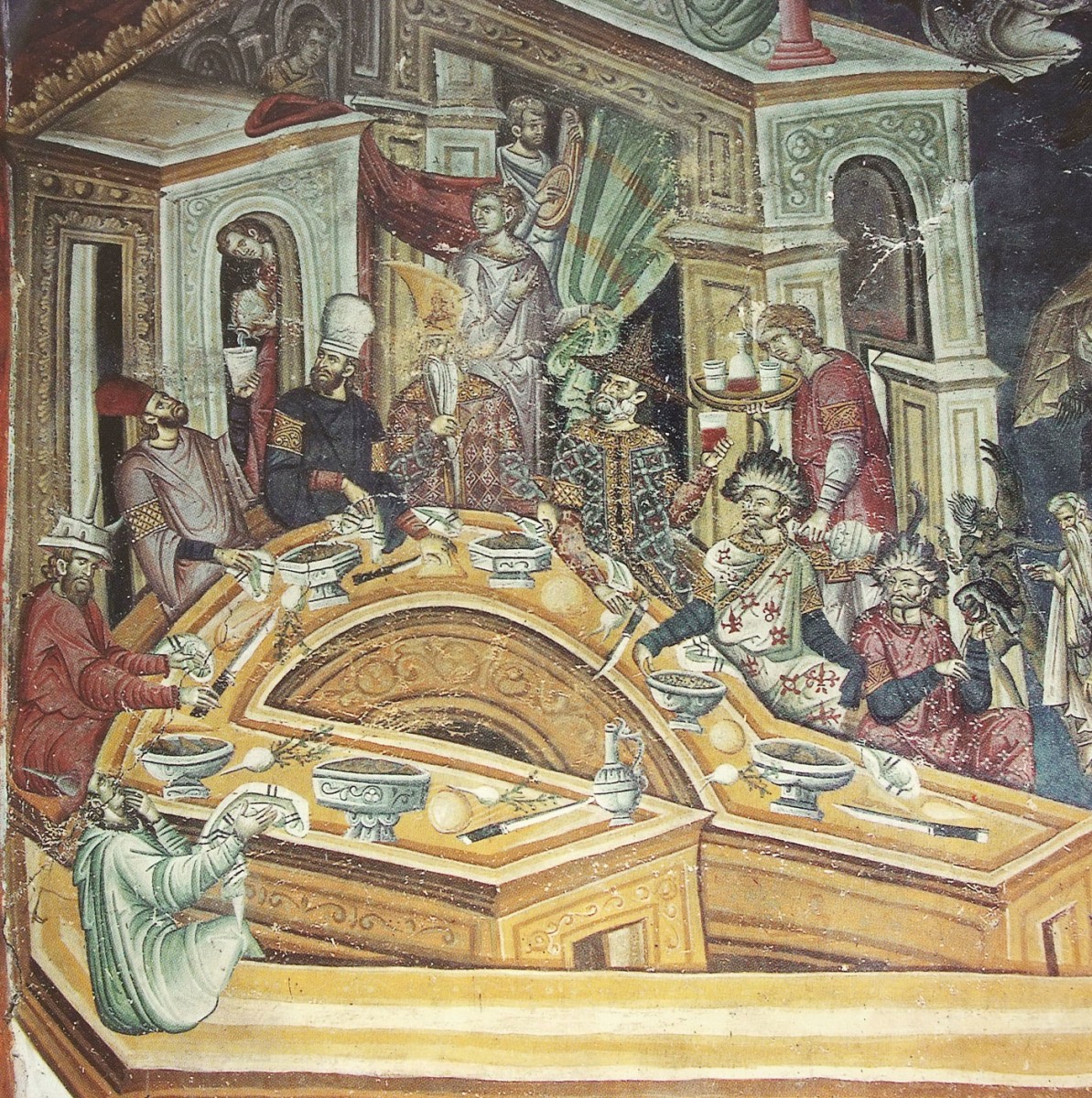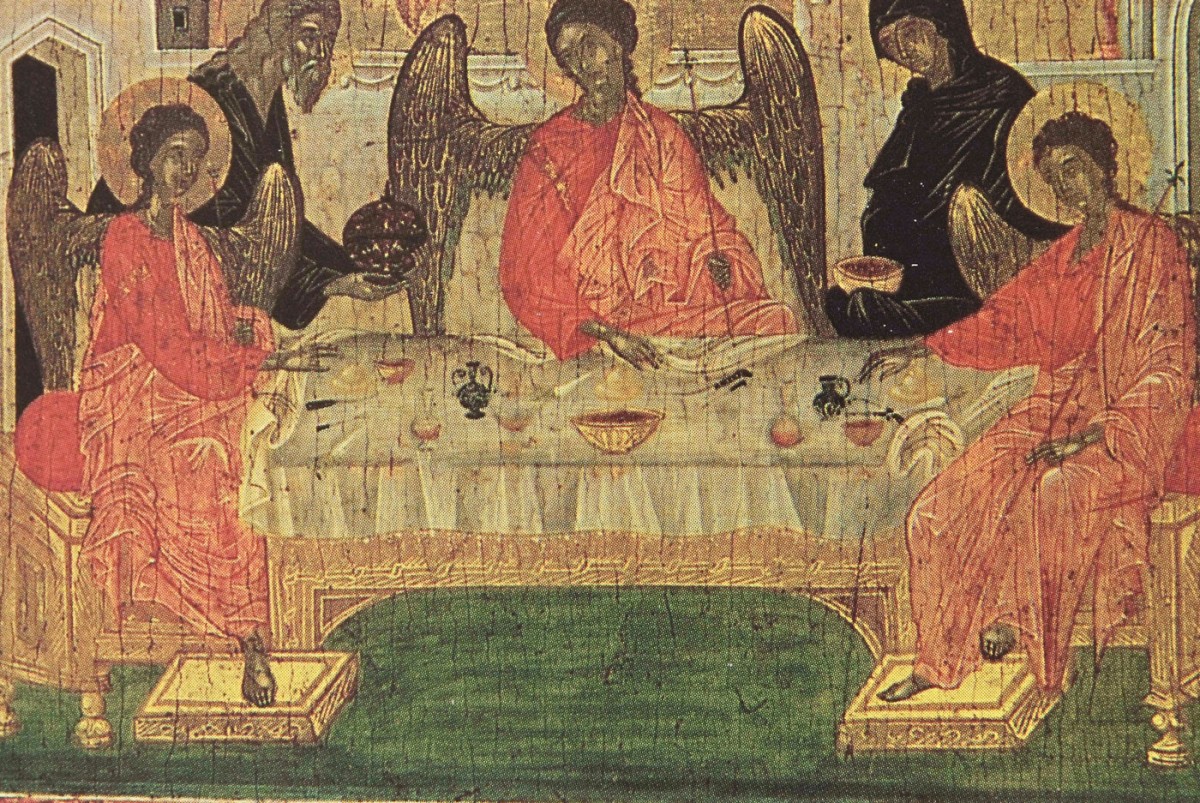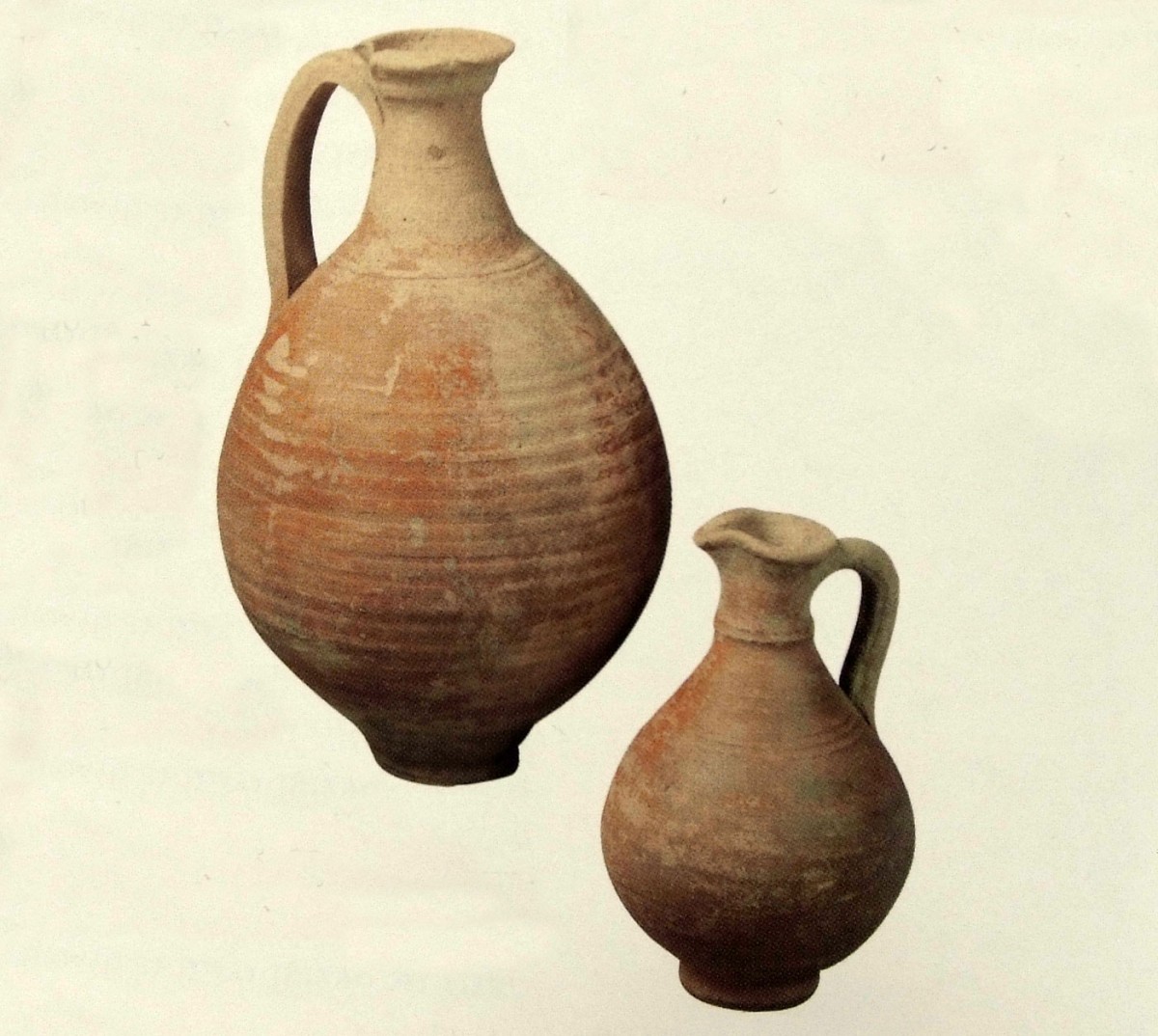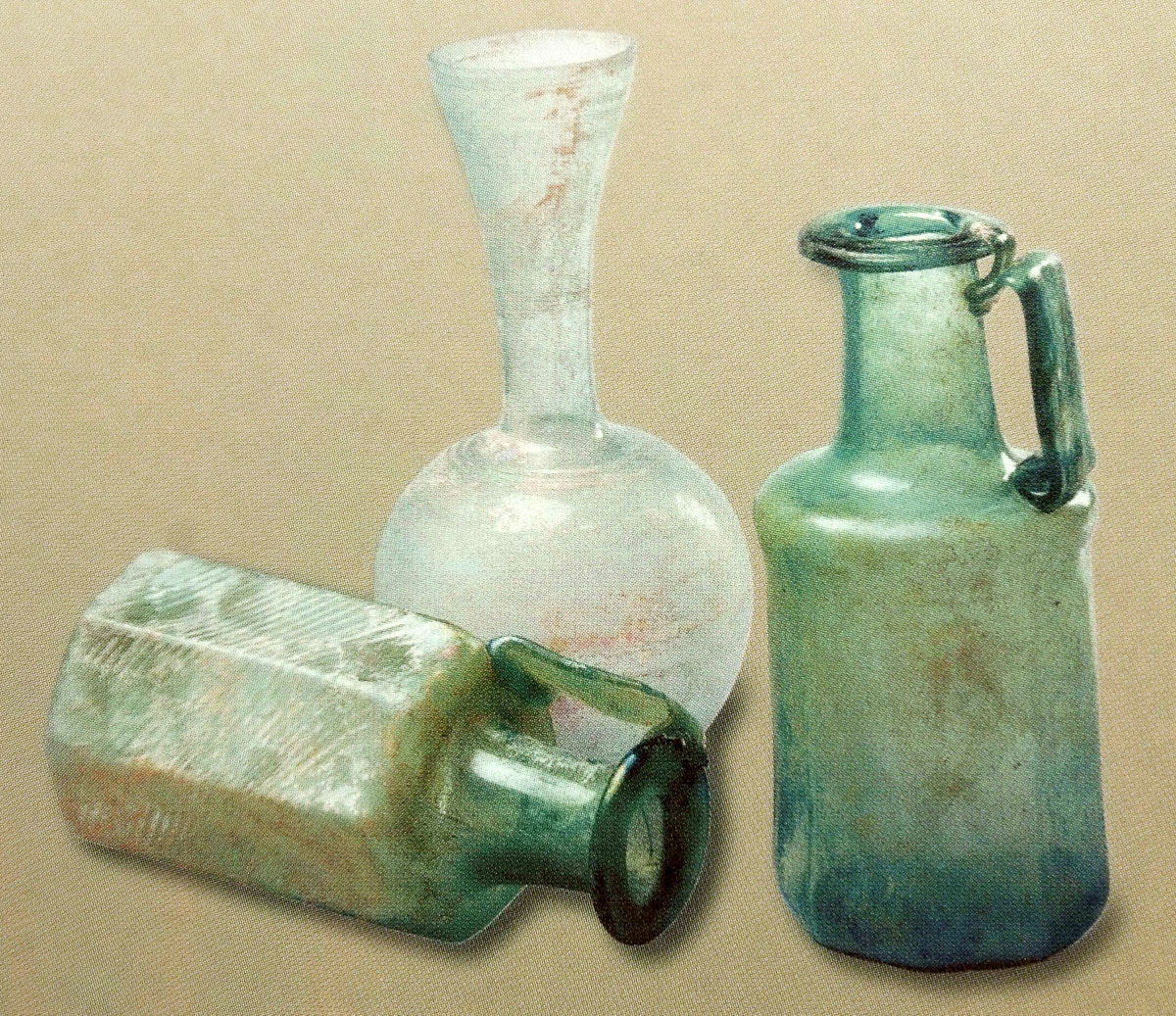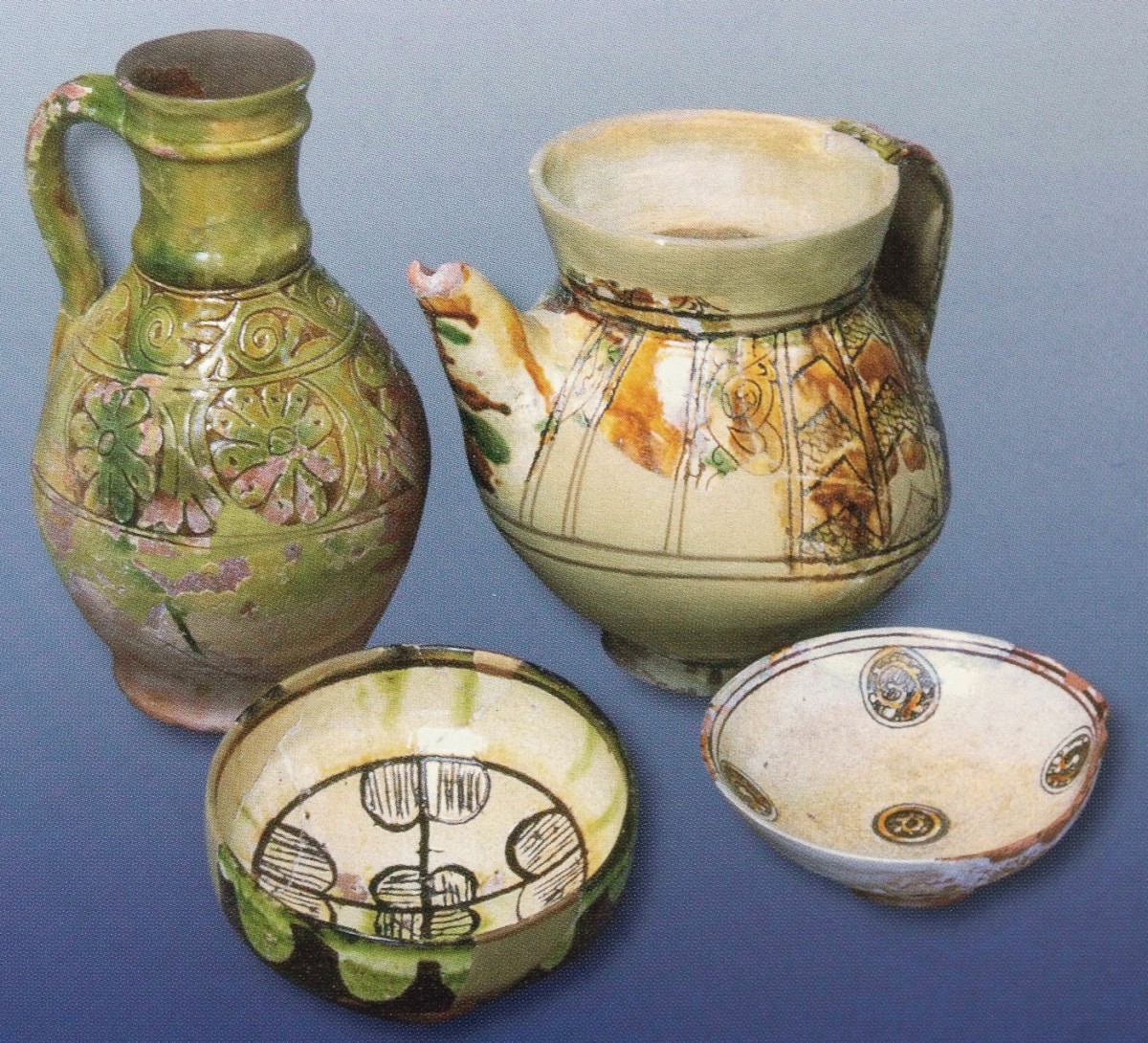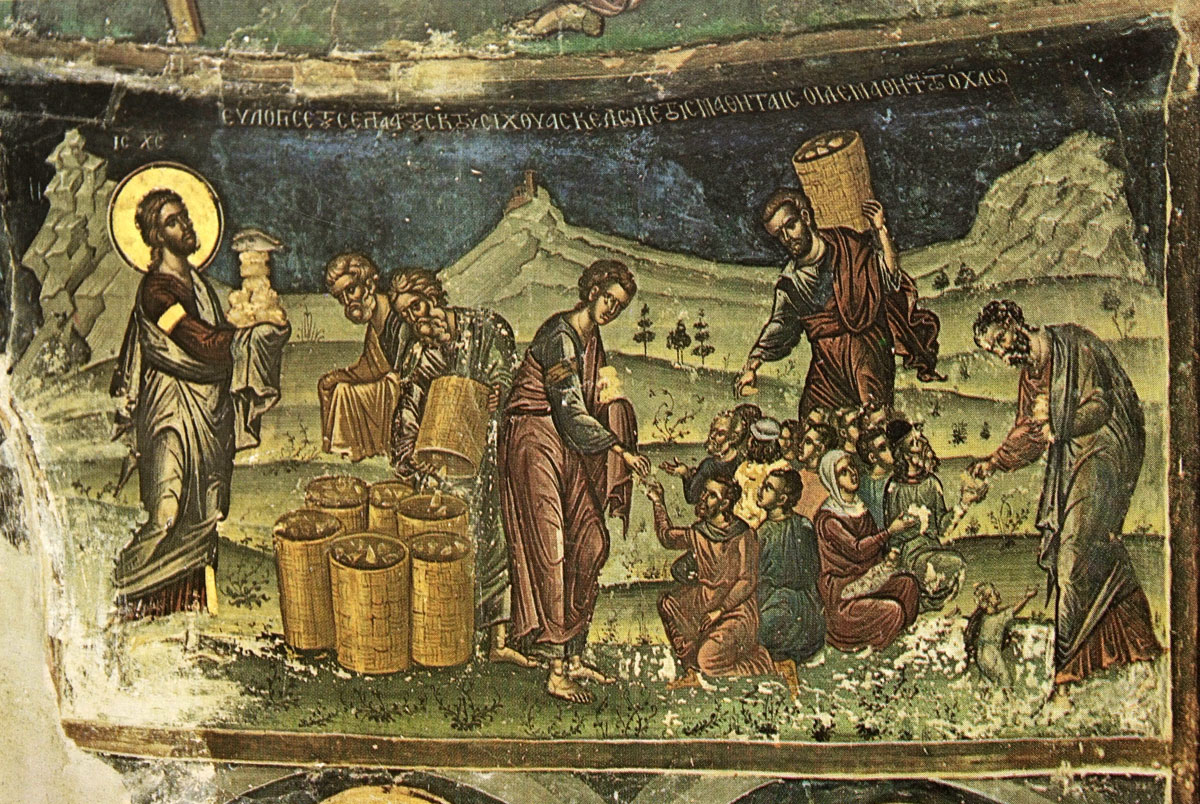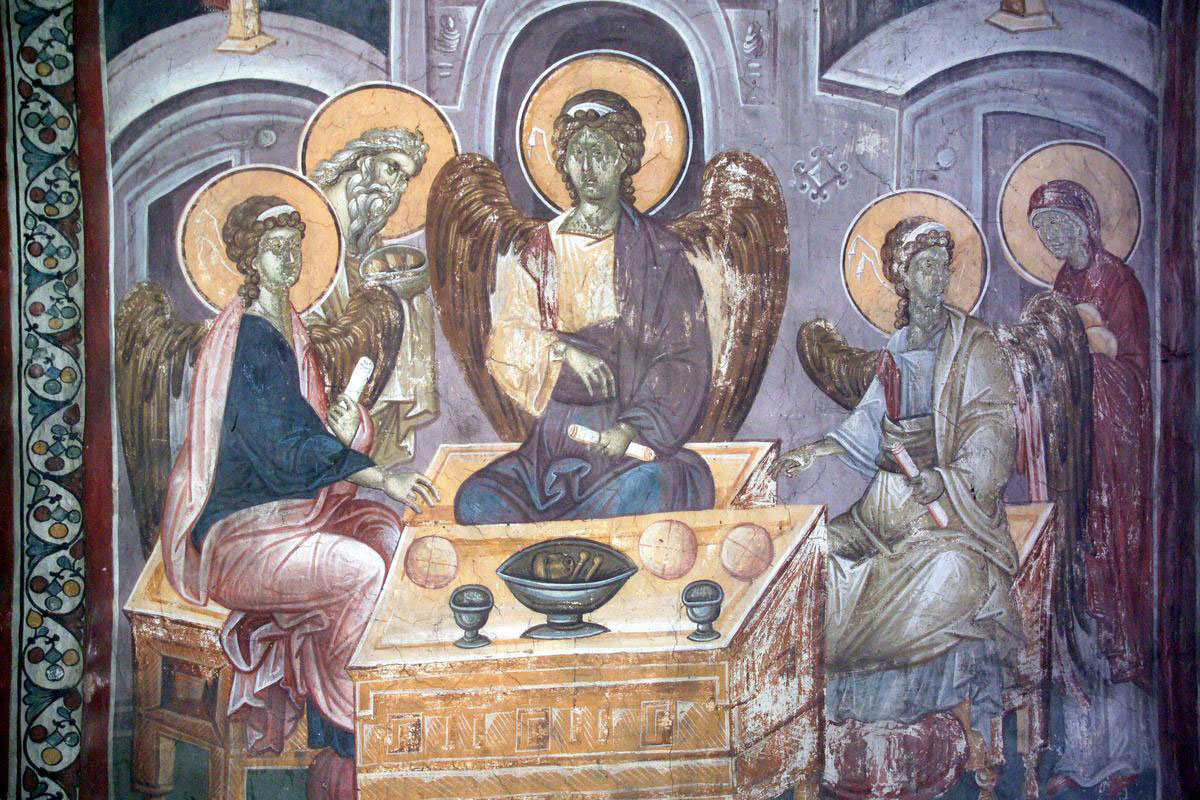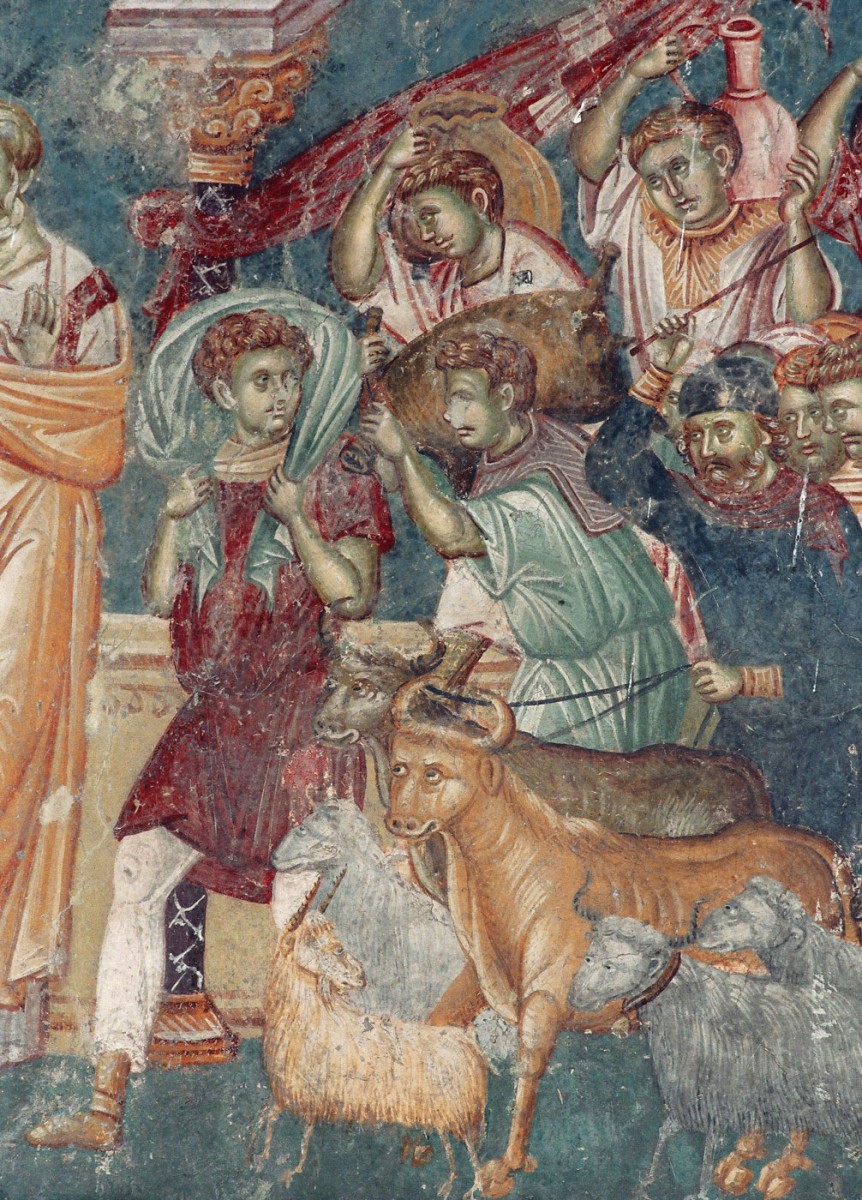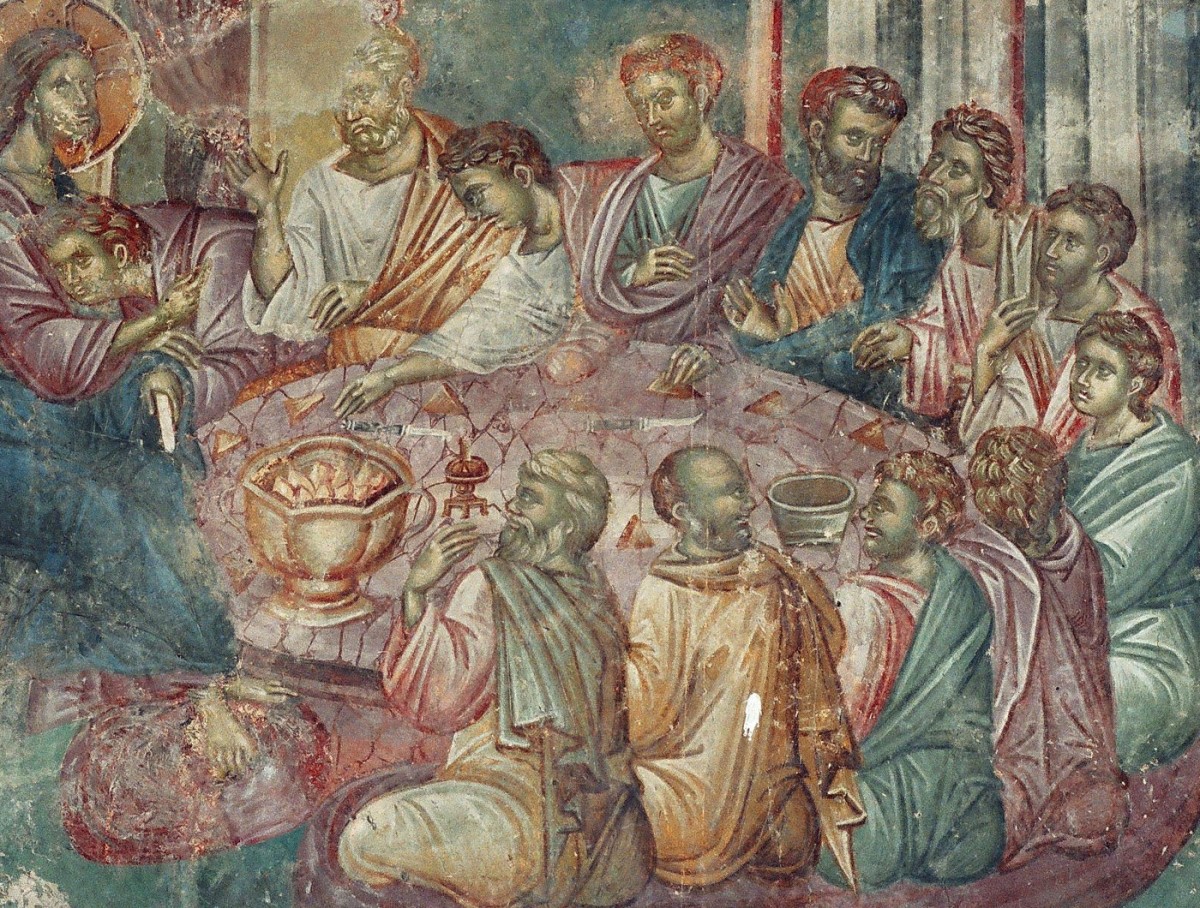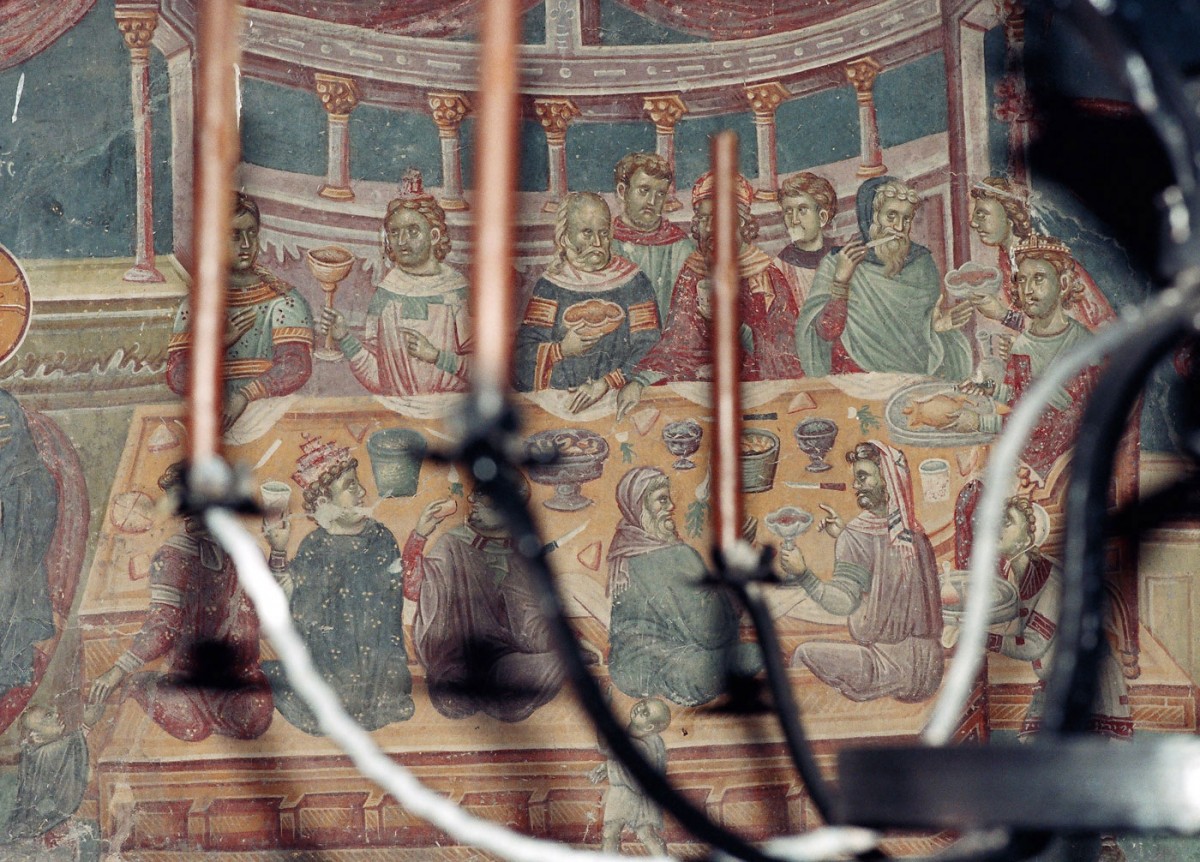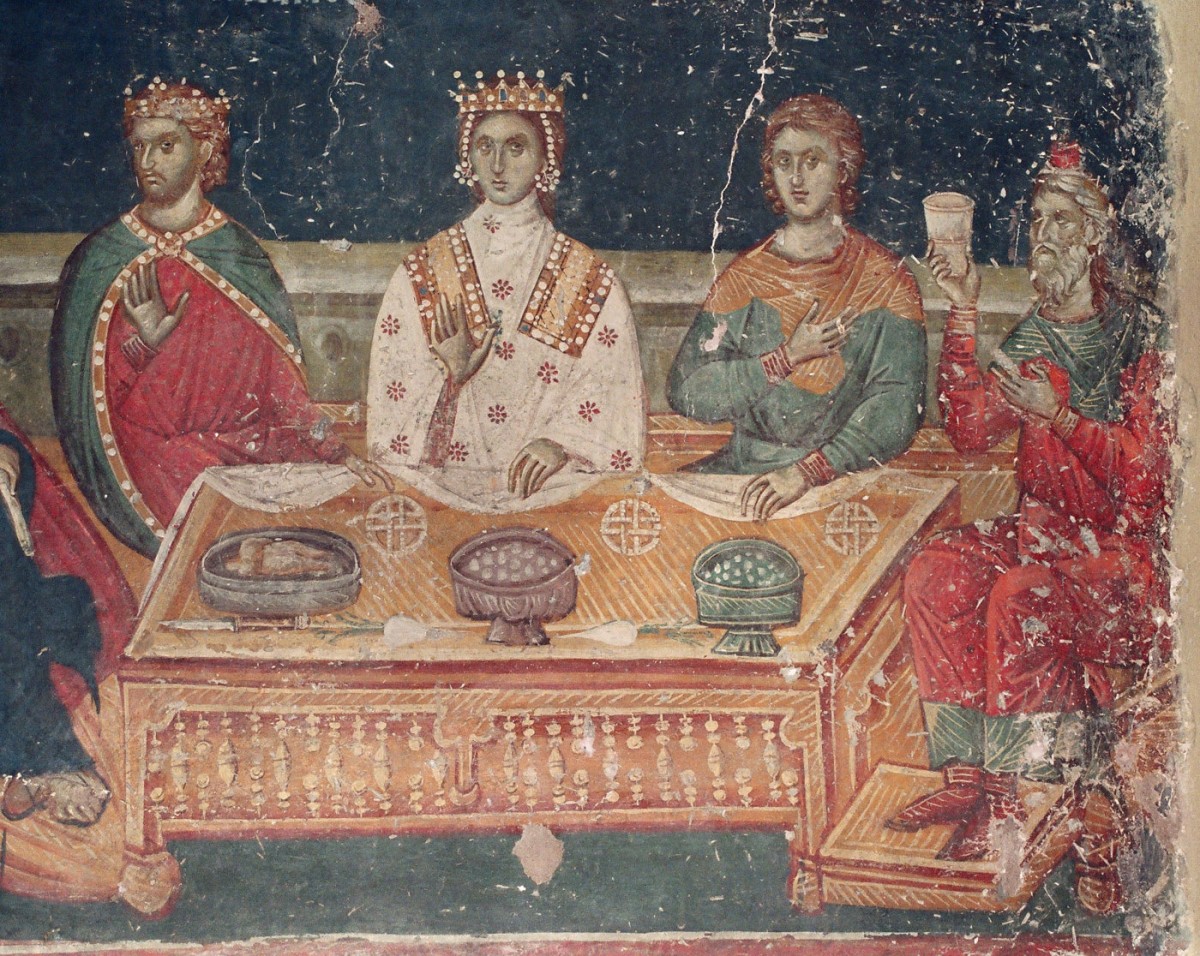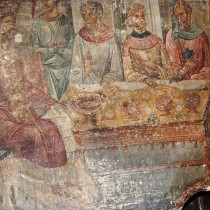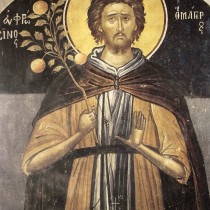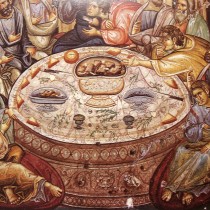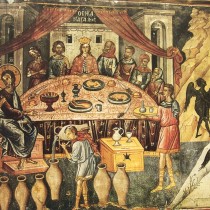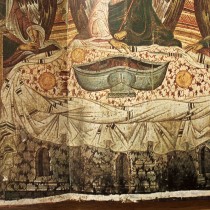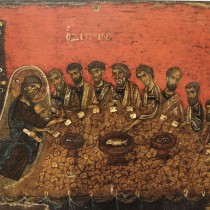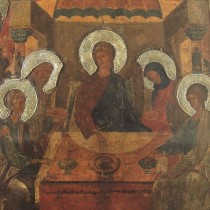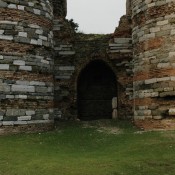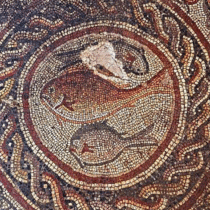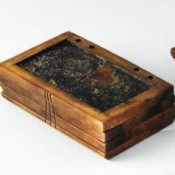There are many ways of approaching the past. One can study sources, investigate maps, material culture or art. Aural traditions can be examined or everything that survives down to our times such as invaluable principles, habits and pieces of advice. History is thus written according to the interests of each researcher and the data he or she have at their disposal.
“What are we eating?’’ is, nevertheless, the question asked daily and one that is vital for our survival. Young and old, rich and poor, scholar or non scholar, men and women, clergy and laymen all show a special interest in the organizing and content of meals . Valuable reports on Byzantine cuisine are thus made by Basil the Great, John Chrysostom, Liutprand of Cremona, Constantine Porfyrogennetos, the “Ptochoprodromos’’, monastery typica (charters) and by so many others who have dealt extensively with this topic.
Byzantine «βρώματα» (victuals)
Wheat and bread
Egypt was the granary of the Byzantine empire up to and including the seventh century. Trading ships transported the grain to big cities where it was stored in state warehouses. The Eparch (Prefect) of Constantinople was par excellence the person responsible for its distribution. If the grain did not arrive on time, the people of that city were threatened by famine.
When the Arabs conquered Egypt, wheat for the capital was procured from the plain of Thrace and stored in the castle of Raidestos. The provision of food for the densely populated city of Constantinople was a great problem faced by each emperor as well as the city’s Eparch. Thus in the 11th c, Michael VII ordered a state monopoly to be declared.
In rural areas, people baked their bread at home in ovens that had to be built in secure spots far from neighbouring houses, according to the orders from the Book of the Eparch in the special chapter “Concerning bakers”.
In large cities there were various types of bread available depending on a person’s economic situation.
The “katharos” (pure/clean) or “metaxotos artos” (silken bread) was thus called because it was made of pure clean wheat flour that was sifted through a fine sieve. It was particularly expensive because it needed special preparation and was easy to digest that is why it was intended either for the sick or the rich. The “semidalites” or “mesos artos” middle/medium bread) was poorer quality bread made of flour mixed with other cereals. The “ryparos artos” (dirty bread) was barley bread or bran eaten by the very poor.
Theodoros Prodromos complained about the different type of bread eaten by the abbot compared to that of the monks. “They eat semidalinon bread, while we eat bran bread”. On campaigns a small loaf called “voukellatos” was eaten, which was often given to the poor. It seems that the “kollix-kollikion” was the well known bagel, a ring -shaped bread usually given to children. Last, there were various sorts of bakery such as the “plakites bread”, the “profournia”, and the “paxamas” (rusk) that was a dry solid little bread shaped like an elipse.
In Constantinople by order of the emperor, “daily bread” was distributed to the citizens that was also called “palatine bread” to distinguish it from the “military bread”. Thus continued the roman custom of “bread and circuses”.
The «προσφάγια» (supplementary dishes)
The Byzantines made cheese from the milk of sheep, goats, cows and buffalo. The “vlachikon tyritsin” (cheese of the Vlachs) was famous and that of Crete as well as the “trofalion” from Epirus. Sources also refer to “anthotyro” (cottage cheese), “myzithra”, “oxygalo” (sour milk) and the poor quality “asvestotyro”. Dry cheese was considered difficult to digest, “prosfato” (fresh) was thought of as dessert and since it was not salted it was preferred by the healthy who poured honey over it to give it flavour. Last «εψυτός τύρος» was judged as unhealthy and was used in “broths with baked cheeses” for flavour.
In Byzantine times, olives were a very popular simple fasting product. They were preserved either in salt water (“the almades”), vinegar or “oxymeli” (vinegar) and honey. Other known types of olives were the “thlastes” (crushed) and the “droupates”.
In the morning the workers used to eat “voukkakraton”, which were pieces of bread dipped in wine just like the ancient Greeks who ate the “akratisma”.
The «προδόρπια» (appetizers)
There were high quality appetizers such as different types of caviar, either black or red. Capers were also usually eaten before meals.
Meat
The Byzantines did not often eat meat. Not only was it expensive but fasting was imposed by the Christian religion.
Meat was cooked “ofta ekzesta” meaning boiled or “epsita ofta” meaning roasted.
The simplest way was boiling and that is why there was a saying «αργώμαγείρω, πάνταεκζεστά» (boiled cooking suits the slow cook). The “skordaton” (with garlic) was meat stuffed with cloves of garlic. Some times they roasted it on spits over a coal fire and other times in an oven in a special utensil that looked like a casserole dish. Meat was referred to then as “klivanoton”. Another well known dish was cooked hare and pork with “akraton” i.e. wine for better flavour.
Meat was obtained by hunting which was the men’s favourite occupation and gave them opportunities for personal distinction. The Byzantines were fond of game which was known for its tastiness. While venison was considered the best meat, the doctors of the period believed it to be difficult to digest. Hare was cooked in wine or vinegar. Larger animals were a more costly and rarer food. The slaughtering of pigs during the winter months supplied the family with sausages, salted pork and the annual cooking fat. Cattle were not eaten as they were used for work in the fields.
Different types of meat were also cooked having been cut into very small thin pieces. This was known as “arvelismeno” and it resembled mince meat.
Deer, roe, boar and different kinds of fowl at meals indicated wealth.
Paupers could only eat the head, feet or entrails of the animal. The small intestine of sheep and goats after being thoroughly cleaned was either cooked as “plektin” (twisted) or coiled round pieces of meat and entrails and then put on a spit to make a type of kokoretsi.
The sources refer to the prohibition of eating the “aimatia” which were the belly and the large intestine boiled and stuffed with entrails and blood.
Lamb was affordable only in wealthy households. Liutprand of Kremona’s dinner included roast kid stuffed with garlic, onion and leeks and served with a sauce called “garo” which caused him to make unfavourable comments.
Poultry and eggs
Poultry was appreciated, since a wide variety was available. Byzantines preferred duck, goose, pigeon, peacock, partridge, blackbird and thrush. In fact there were special breeders of peacock so as to meet the needs of the ruling class. Freshly slaughtered birds were only eaten after they had been soaked in vinegar to soften the flesh. Meat was often pickled in salt and herbs.
Hen’s eggs were a usual food for young and old. They were eaten boiled, roasted, fried or sucked raw. Byzantines preferred pheasant’s eggs more than those of other birds. A favourite delicacy was the “sfoungato”.
Fish and seafood
People fished with nets, hooks or harpoons depending on the type of fish whether they were on the coast of Asia Minor, the Aegean islands, off the shores of either the Black sea or Propontis. For deep waters a special net was used called the “gripos”. During the fish migration period, whole shoals were trapped in special fishing grounds. From special observatories, the fishermen saw when their nets were full and went to gather them. Fatty fish was suitable for pickling and it was preserved over a long period in layers of coarsely grained salt. It was good food both for those in the empire living a long way from the coast and for the winter months. Salted and smoked fish were sold exclusively by grocers.
“White fish” such as mullet, sea bass, bream, and large smelt were regarded as expensive and top quality fish. Theodoros Prodromos complained that his money could not buy even the cheaper fish such as tsiros (dried mackerel), mackerel and tuna.
In the Byzantine era, molluscs and shellfish were thought of as pure and were eaten during periods of fasting. People preferred octopus, squid, and stuffed calamari. They also ate shrimps, crayfish, sea urchin, mussels, oysters and barnacles.
Pulses
Pulses were cheap and plentiful and as expected were preferred by the poorer classes. They could be preserved for a long time and so we encounter them both in big urban centres and in the most remote regions of the empire. Sources refer to “Fasoulia” (beans) and “kyamia” (broad beans) that were not only eaten as soup but also soaked and ground like fava. Lentils, “lupinaria” and “erevinthia” (chickpeas) were boiled and eaten with particular pleasure.
Greens and vegetables
The Byzantines, whether town or country dwellers, kept a small vegetable garden to provide them with the basics. Ptochoprodromos refers to the following vegetables eaten on a daily basis: “celery, leek-lettuce and cardamom and endives, spinach, chrysolachanon (gold lettuce), turnip, aubergine, phrygian cabbage and cabbage stalks, lettuce, and beetroot and cauliflower.”
Fasting over many days made the housewives resort to vegetables and pulses for the daily meal. They ate them fresh in the different stages of growth; the shoots, the leaves, the bulbs and the roots. To preserve any leftovers, they pickled them in salt and vinegar and in this way kept them over the winter when there was a smaller variety of fresh vegetables.
Desserts
The “plakoundopoioi” or “plakoundaroioi”, i.e. pastrycooks, prepared several desserts for the pleasure of the rich. The plakoundes(pastries) were made of dough to which honey was added or syrup of must. The best honey was thought to be the unsmoked kind from either Thasos, Hymettos or the Cyclades. Thus they made pastelia (honey and sesame sweets), moustalevria (a jelly of fermented grape juice), walnut pastries, quince jelly and desserts made of fruit such as the morello cherry or nuts such as the almond. “Lalangia” (fritters) and “kollyria” (a type of doughnut) were simple and easy to make.
Refreshing beverages and wine
A good host’s first concern was to have a plentiful supply of “nearon hydor” (fresh water) during a dinner. This was often served by slaves in richly decorated pitchers.
Byzantines loved wine which they had in a large variety. Wines were either separated according to their colour into white, “kirrous” (blonde), “rousious” (red) and “melanas” (black) or based on their content into “leptous-apalous” (fine and soft).“styfondas” (astringent/sharp) or “austerous” (austere) and “glykazontas” (sweet). There were differences according to the aging. Each wine was referred to by the name of its region of origin.
Thus we encounter the fragrant Thasio wine, the Chio, the Ikario, the Samio, the Maronio from Maroneia in Thrace, the Naxio, the sweet wine from Crete and so many others. At times old wine was mixed with honey and pepper to make the “konthiton”. Other alcoholic drinks were “melites” (cider), “oinos kinnamomou” (wine with cinnamon), “rodites”, “marathites”, “kyminothermon”, “mastichato”, “kitraton”. Some of the above had digestive qualities, or got rid the odours of food previously eaten.
The Byzantines drank the following beverages for refreshment: “thasorrofon” a type of orgeat, “rodomeli” (meli/honey), “meligala” and “hydromelo” made from boiling one part honey and two parts water and then removing the froth. Sour milk was also drank and considered particularly healthy. Last the Byzantines knew how to make resinated wine and beer but these were not the most preferred beverages.
The Byzantine table
So many stories are associated with a table. The Byzantine table, whether secular or clerical, belonging to paupers or nobles, monks or soldiers, was the concern of the very many people who prepared it and saw to its contents both day and night. It was also important to those enjoying the dishes whether choice or meagre.
Byzantines ate four times a day. Breakfast was called “progevma” or “prosfagon”, lunch was the “gevma”, the afternoon meal was the “deilino” (dusk) or “deili” and dinner was the “deipno”. The most important meals, according to the sources seem to have been the lunch called “ariston” (excellent) and the evening meal known as the “deipnos” or “deipnon”.
In monastery typica (charters)it is mentioned that the invitation to the table was made by three knocks on the «ξύλου της βρώσεως» (food stick). And this process was called the “deipnokleterion” (the call to dinner) even when dining took place immediately after the holy service.
The byzantine table or “tavla” was round, mainly for practical reasons, since people used to eat with their hands from a “lekanida” (basin) placed in the centre for every one to have access to the food. When Liutprand was invited to a palace dinner, he mentions sitting at a long narrow rectangular table. This was an expected choice, as each guest’s place also declared his respective place in the hierarchy. The same obviously applied to monastery tables. There were also tables called “symvalta” meaning that they could open or close depending on the number of seated guests. During military campaigns “systelta” tables were used that sat 2 to 3 individuals. Often the table could also be “chamokoumva”, meaning on carpets spread on the ground.
Tables were made of wood, but both the rich and the nobles, wishing to impress their guests, chose tables intricately decorated with silver, ivory or gold plated surfaces.
Up to the end of the 10th century, during symposiums and formal dinners, it appears to have been the custom to eat on couches while a throng of servants and wine servers saw to the guests’ every need. Liutprand nastily comments that while eating at the table of a certain general named Michael”«εκείνος επεξέτεινεν επ’ αυτού την πτέρναν» (he (the general) stretched out his heel and touched him (Liutprand) with it). At the same time it was the custom to eat seated on “skamnous” (stools) or “thronia” (thrones) which, depending on the occasion, could be “systelta” or “symvalta”. It is said that the king trod on a special foot stool.
The table’s preparation began by its being cleaned either with a damp cloth or a piece of fabric dipped in balsam. Next a tablecloth called the “mensalio” was spread whose make of clothe indicated the host’s social and financial status. On the table were laid “cheiromaktra”, “encheiria” or linen “manthilia” (handkerchiefs) for the guests to dry their hands after washing them. This custom confirms the Βyzantines’ practice of eating with their hands.
Domestic and table utensils
Ceramic tableware was generally used. In rich households, utensils made of glass, silver or gold were also used. Poorer people were known to borrow precious utensils from friends so as to honour a guest. There were knives with amber or ivory handles. Written sources already exist in the 4th century referring to the use of forks. 10th century western chroniclers mention that Princess Theodora Douka introduced the use of forks to Venice when she went there as a bride and that this had been considered a dangerous modern luxury. Forks have been portrayed in frescoes after the 11th century. Originally they resembled forked sticks and then they became three pronged and five pronged. Wheneatingsoups, kochliariaorspoonswereused.
The portions of food were carried to the table mostly on large wooden surfaces and more rarely on metallic ones. “Pinakia” were wooden or stoneware plates usually glazed on the inside and decorated with drawn or etched patterns either geometric or of flora and fauna. The utensil had to be glazed so it could be cleaned and also be suitable for hot food without it spoiling. “Minsouria” were large deep plates sometimes silver and embossed while the smaller “minsourakia” were pure gold. They contained the food cited for a formal dinner as well as the “skoutelia”, “tryvlia”, “saltsarion”, “alatikon”, “mouchroutia” and “koupes”. Last, sweetmeats, fruit and nuts were presented on trays.
Wine was never missing from a byzantine table nor some digestive drink. Refreshing beverages or water were put in coolers, goblets and craters. In the summer months, water was put in large, usually stoneware, pitchers referred to as “kryoteria(kryos /cold)”, “psychrostasia (psychros/cold)”, or “kryologoi”.
The cupbearer served the guests in various cups which depending on their shape and capacity were called “kavkia”, “vavkalia”,“chalintzia”,“krosovolia”, “krateres”, or “kylikes”.
Women would eat with the men at intimate family meals, but they did not attend symposia. Monks and the clergy were forbidden to eat in private with women, except for emergencies.
The custom of saying grace at table is stressed also by John Chrysostom who says «τράπεζα από ευχής αρχομένην και εις ευχήν καταλήγουσα ουδέποτε υστερηθήσεται» (a meal starting and ending by saying grace will never lack in anything)?
When the dinner was formal, either at the palace or in some communal monastery, the first to start eating would be either the king or the abbot, followed by the rest. It was considered disrespectful for someone not to taste all the food. During a meal in a monastery, silence had to prevail for the monks’ attention not to stray to earthly thoughts while the holy scriptures or a saint’s life were being read.
After the meal the “aponipsis” (washing) of hands with hot water took place. Two utensils were used; the “epichytis” from which the hot water was poured and the “chernivion” which was a basin to collect the water used for washing. Both of them made up the “chernivoxeston”. Next hands were dried with the “cheiromaktra”. In the homes of the rich, perfumes were also rubbed on the guests’ hands.
A large number of people served at the formal byzantine table. The diners were waited on by the “opsopoioi”, “oinochooi”, “mageiroi”, “trapezopoioi”, “karykeftes”, “syskevastes melipekton”, “plakountopoioi”, “thermothotes’”. All those appearing during the symposium were young men and women well dressed and coiffed who created a lovely atmosphere with their fans and saw that nothing was missing from the table.
Who would wish to be absent from such culinary delights?
Eleni Albanidou
Archaeologist and Teacher
